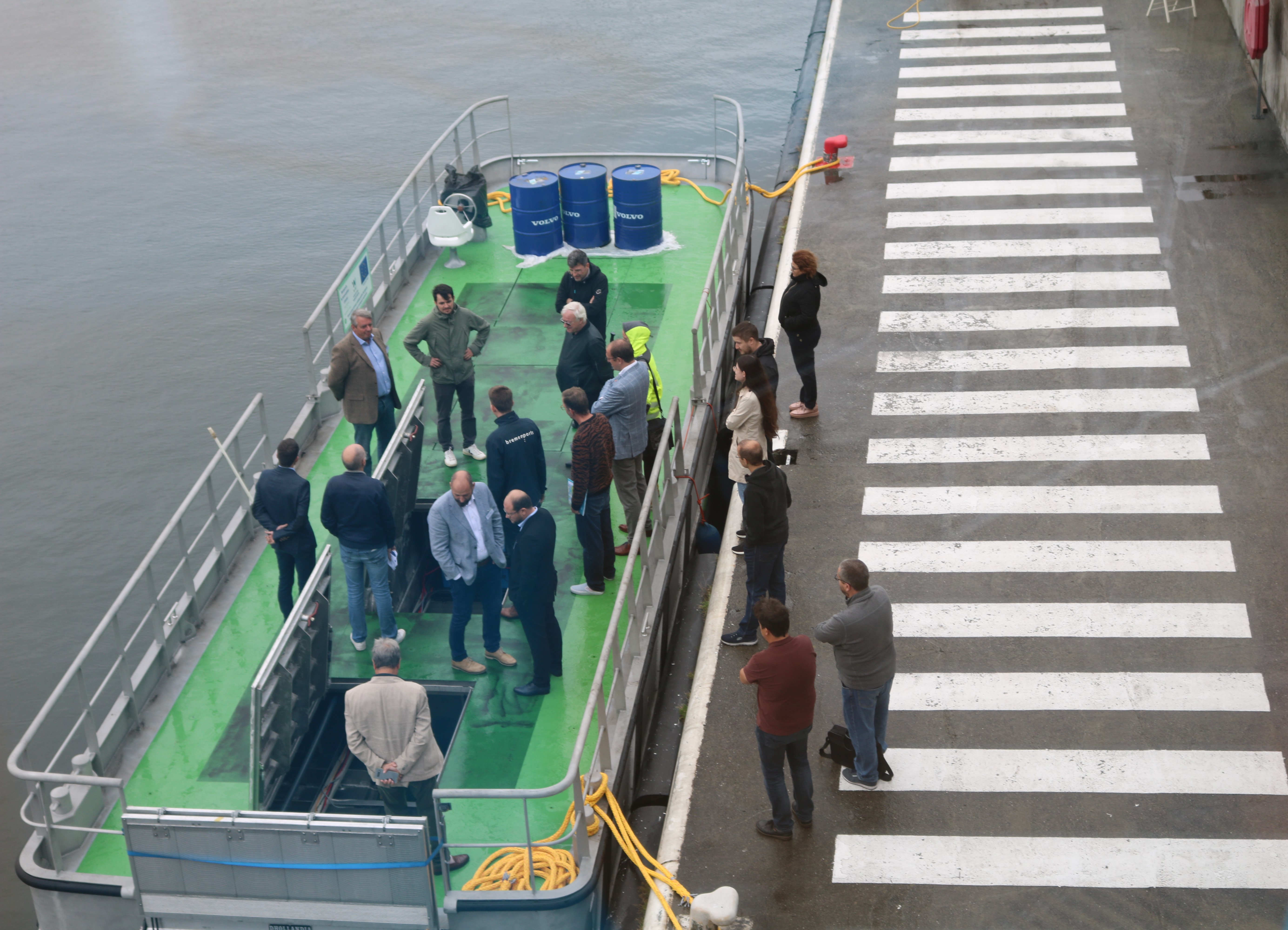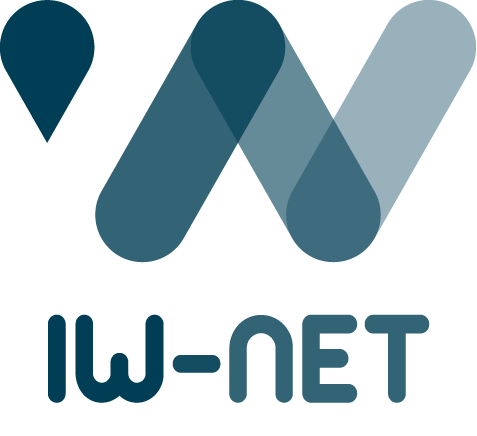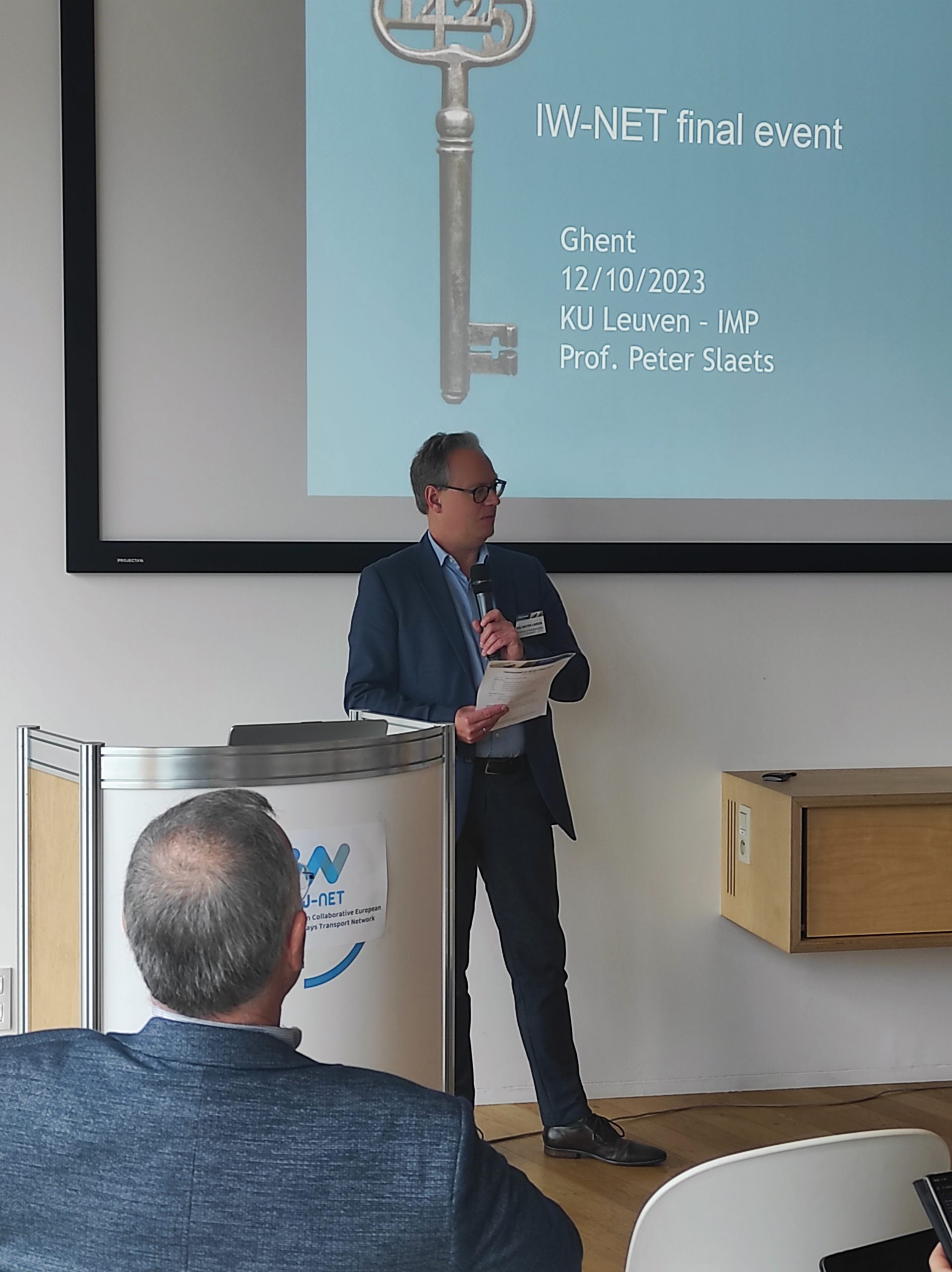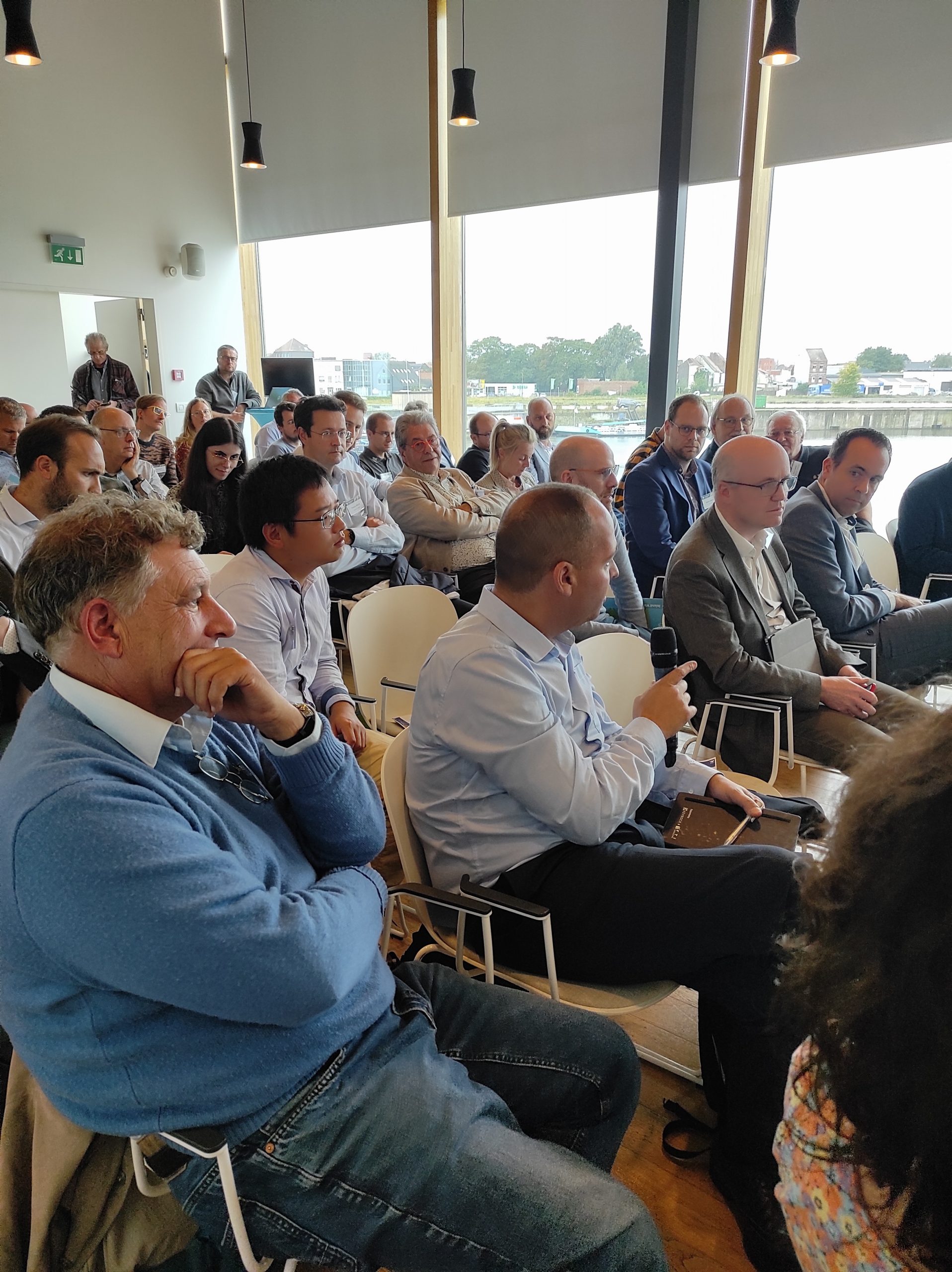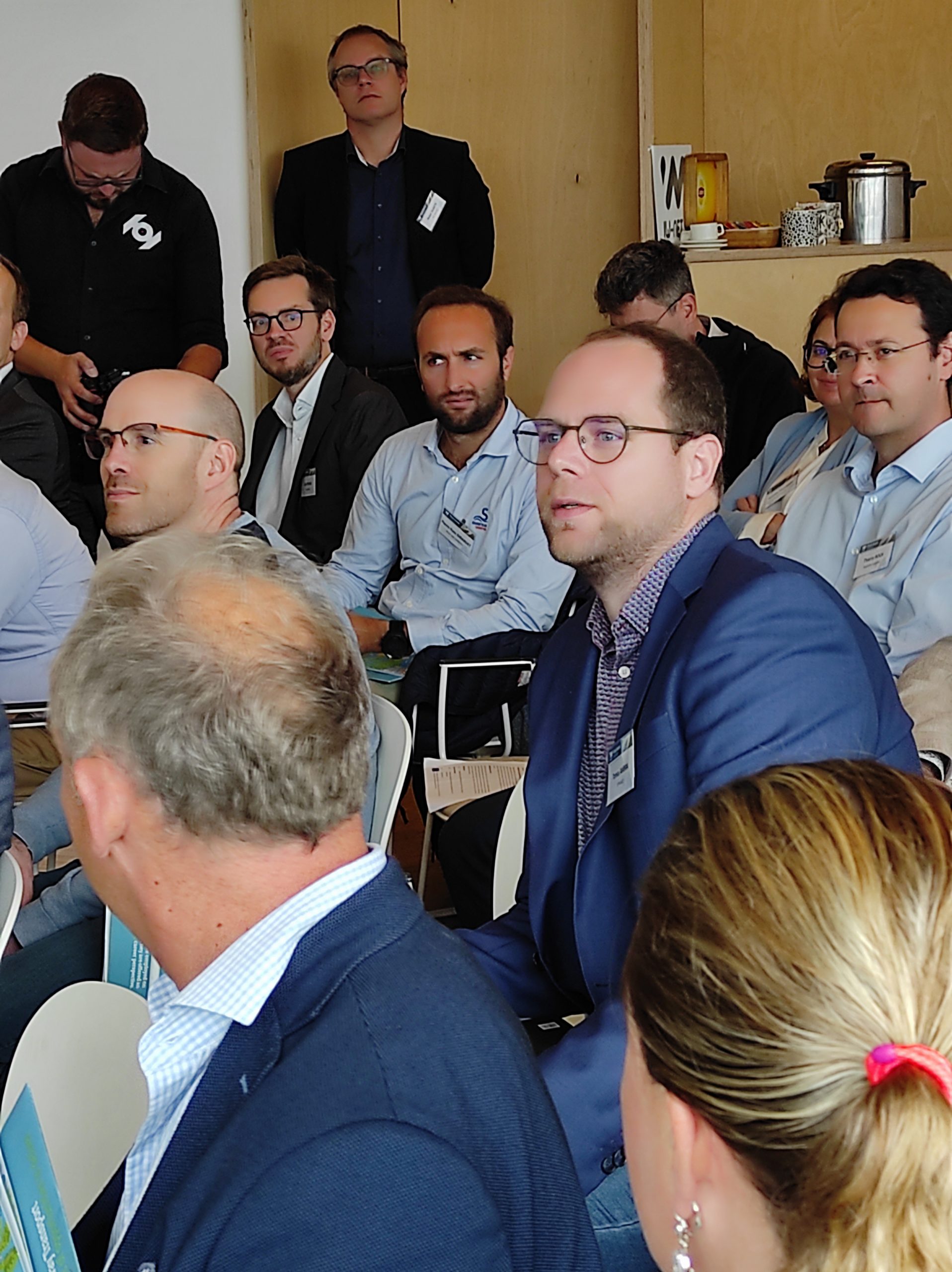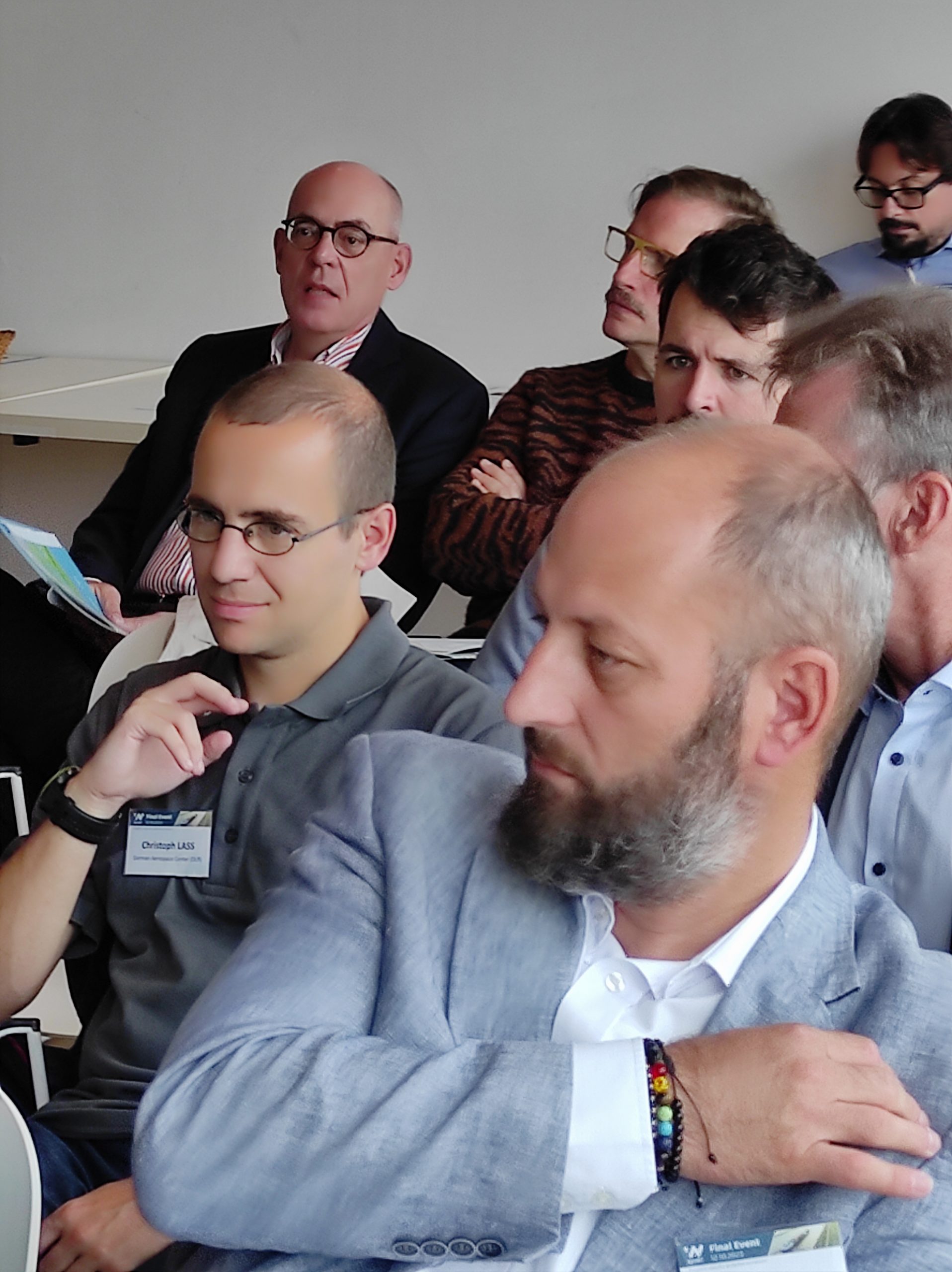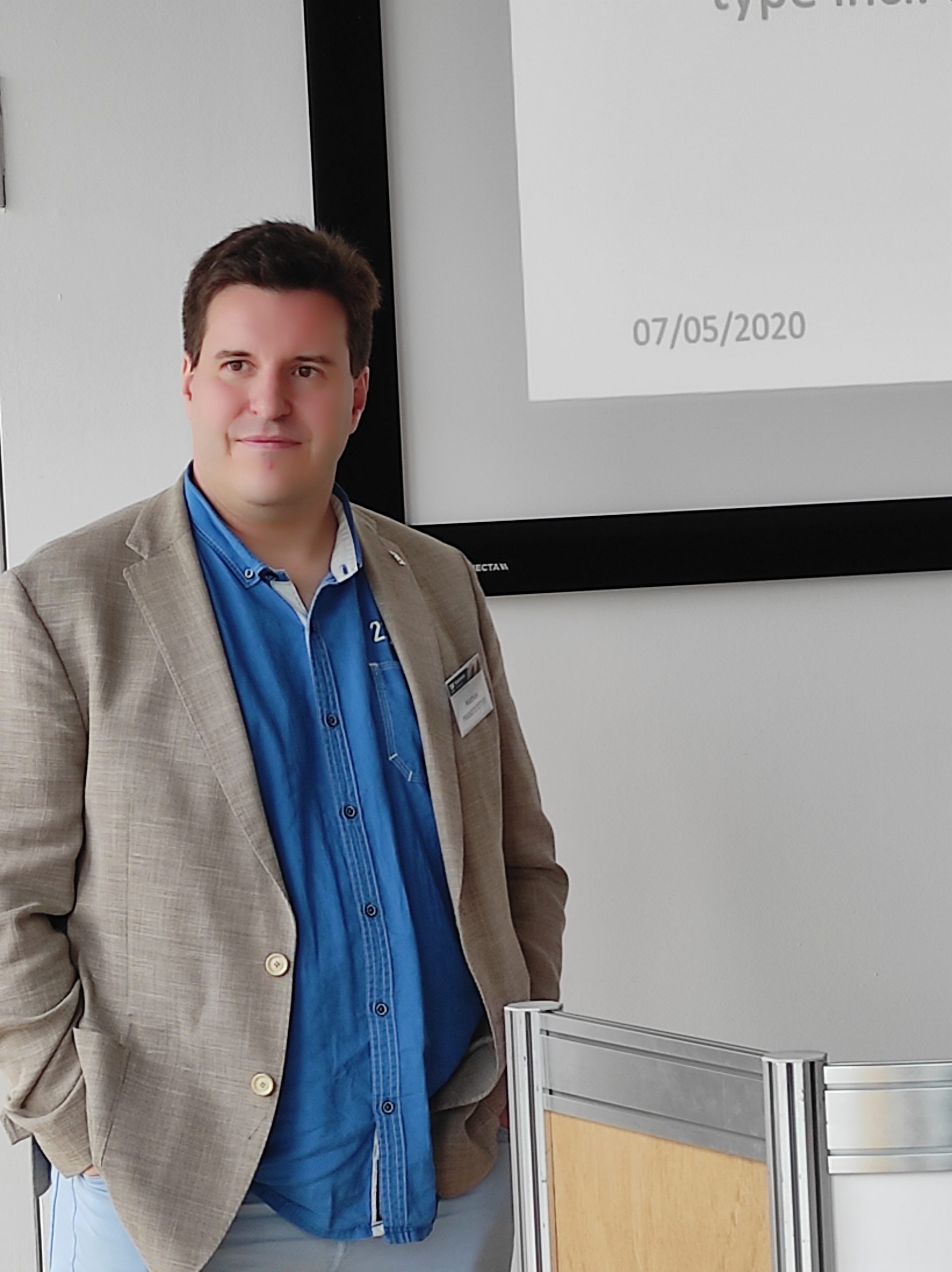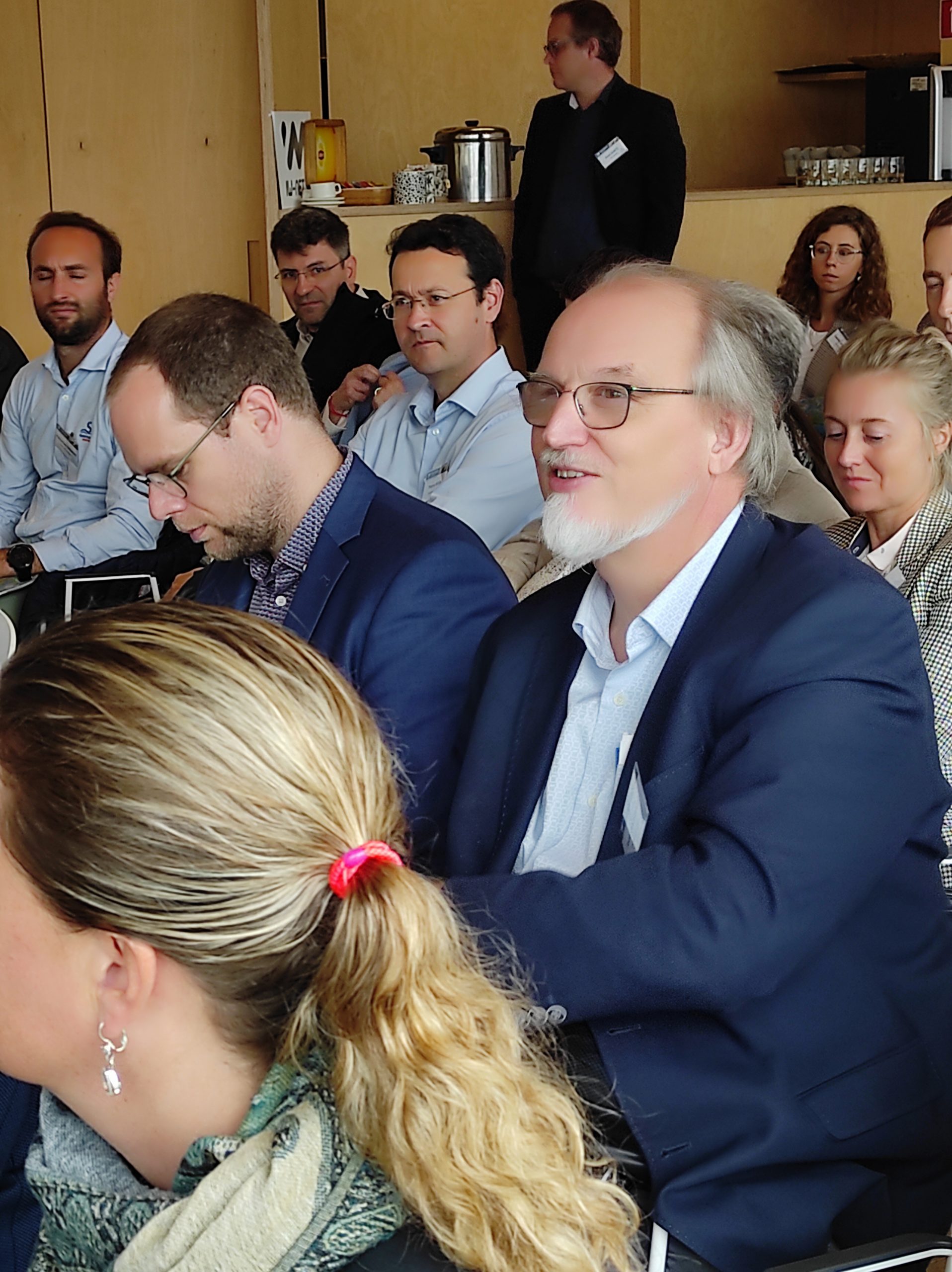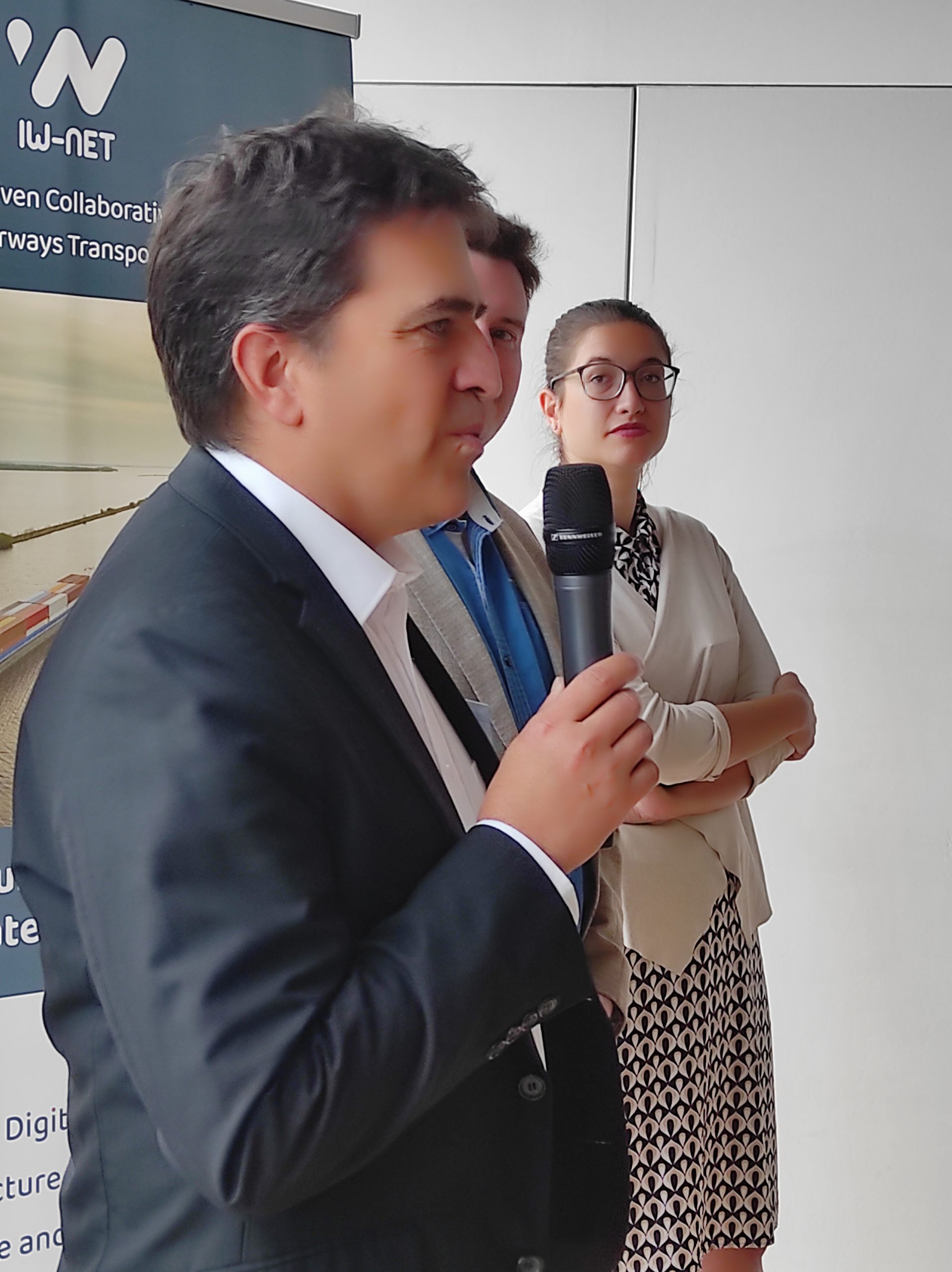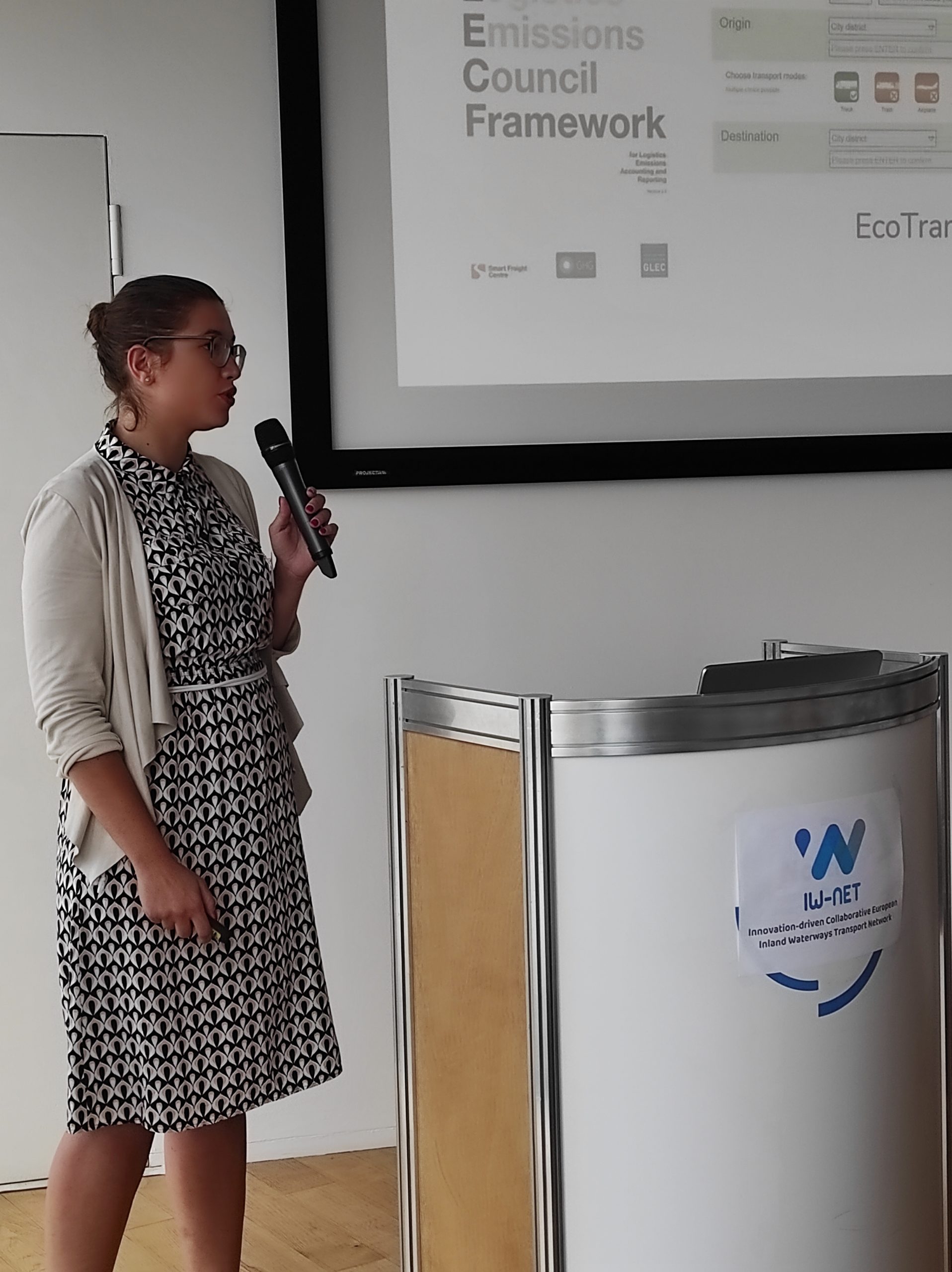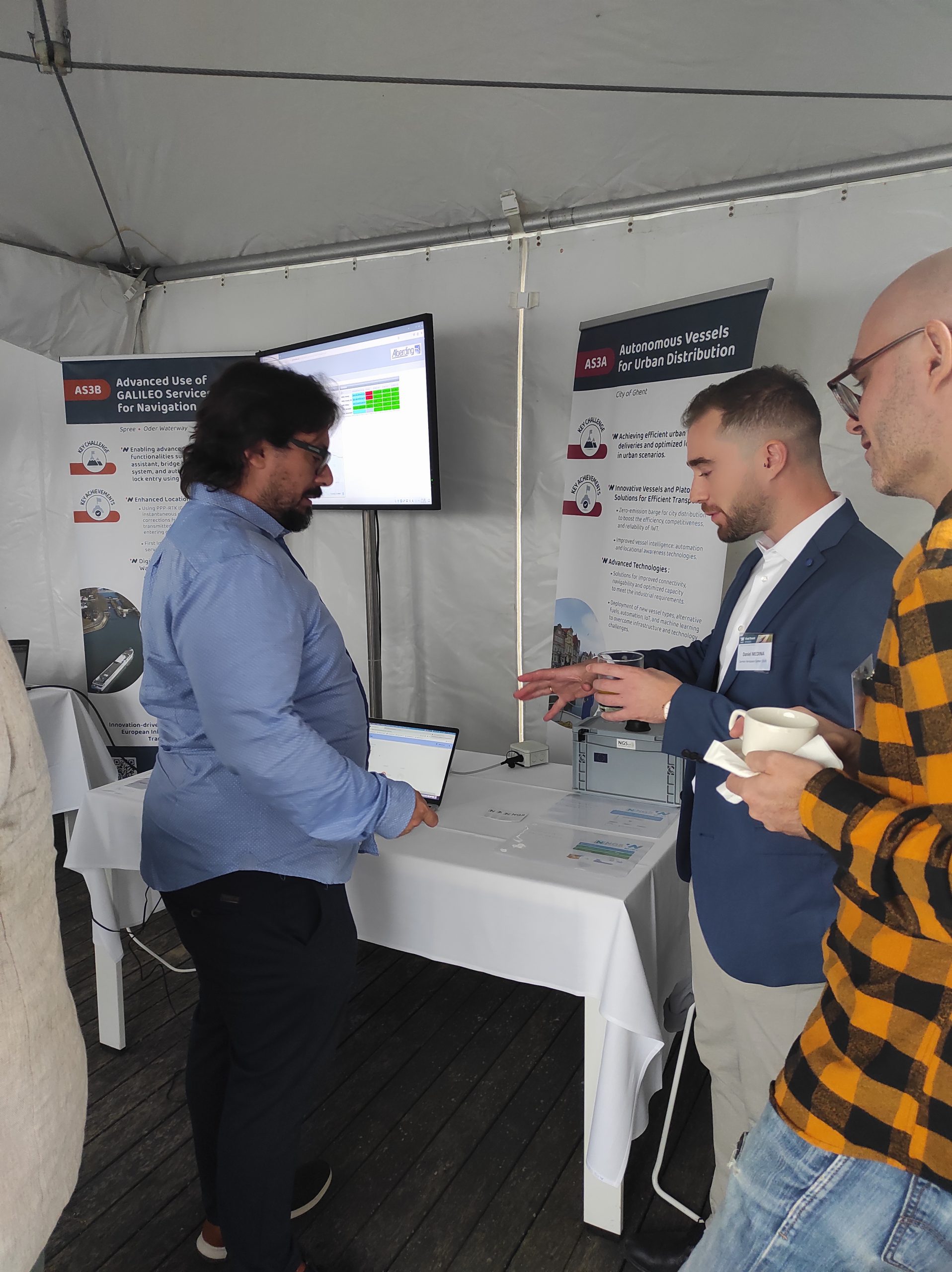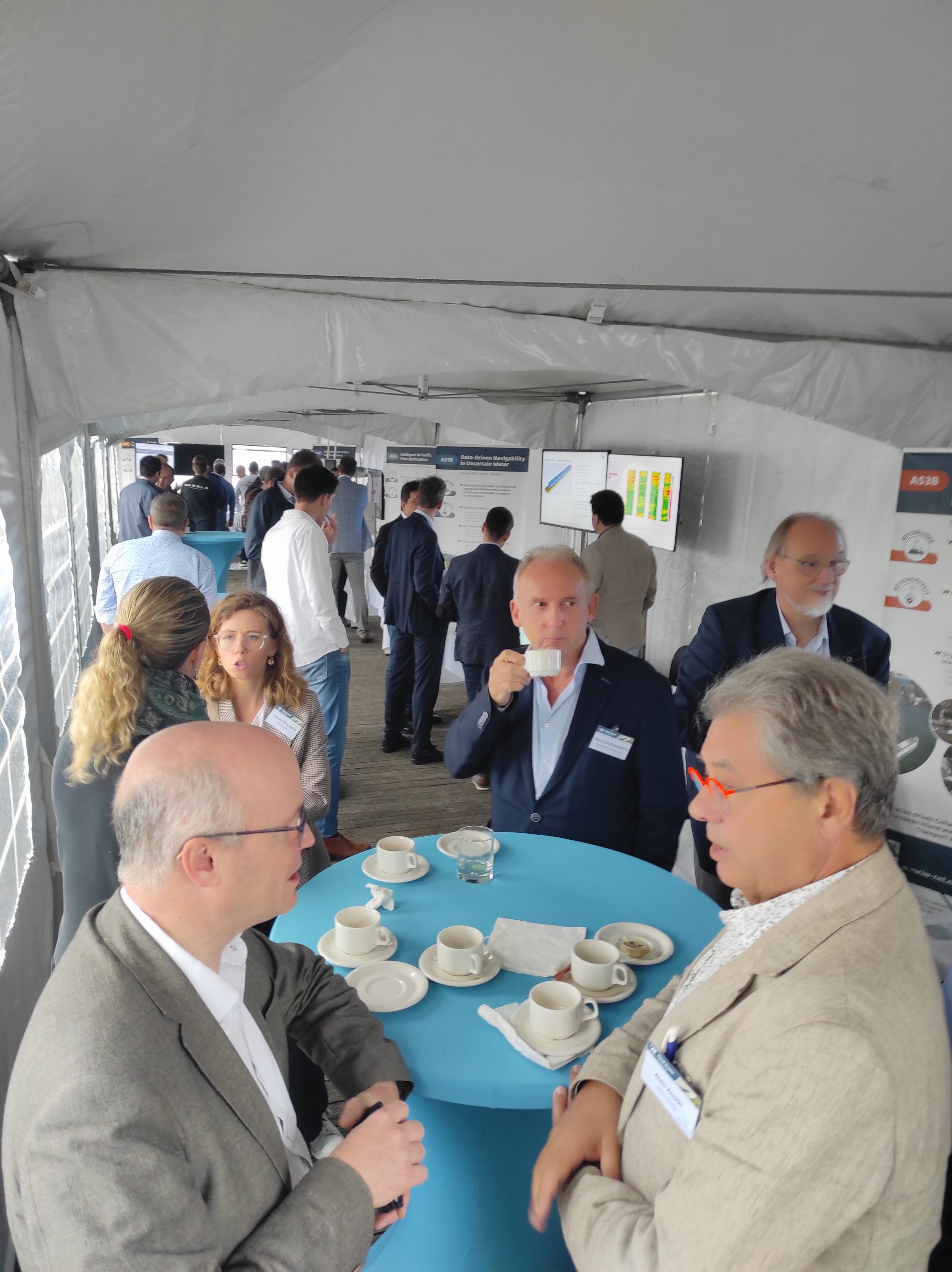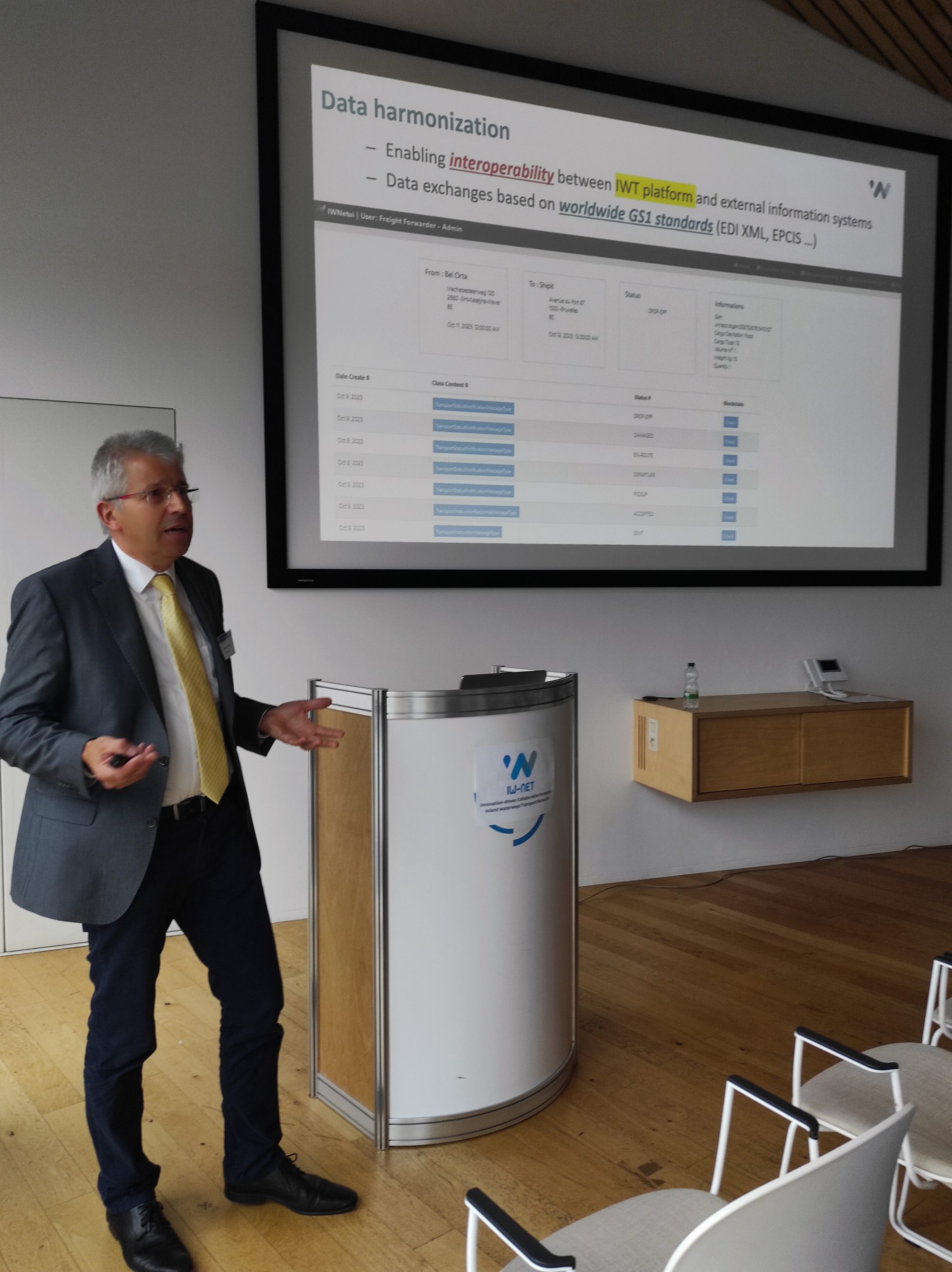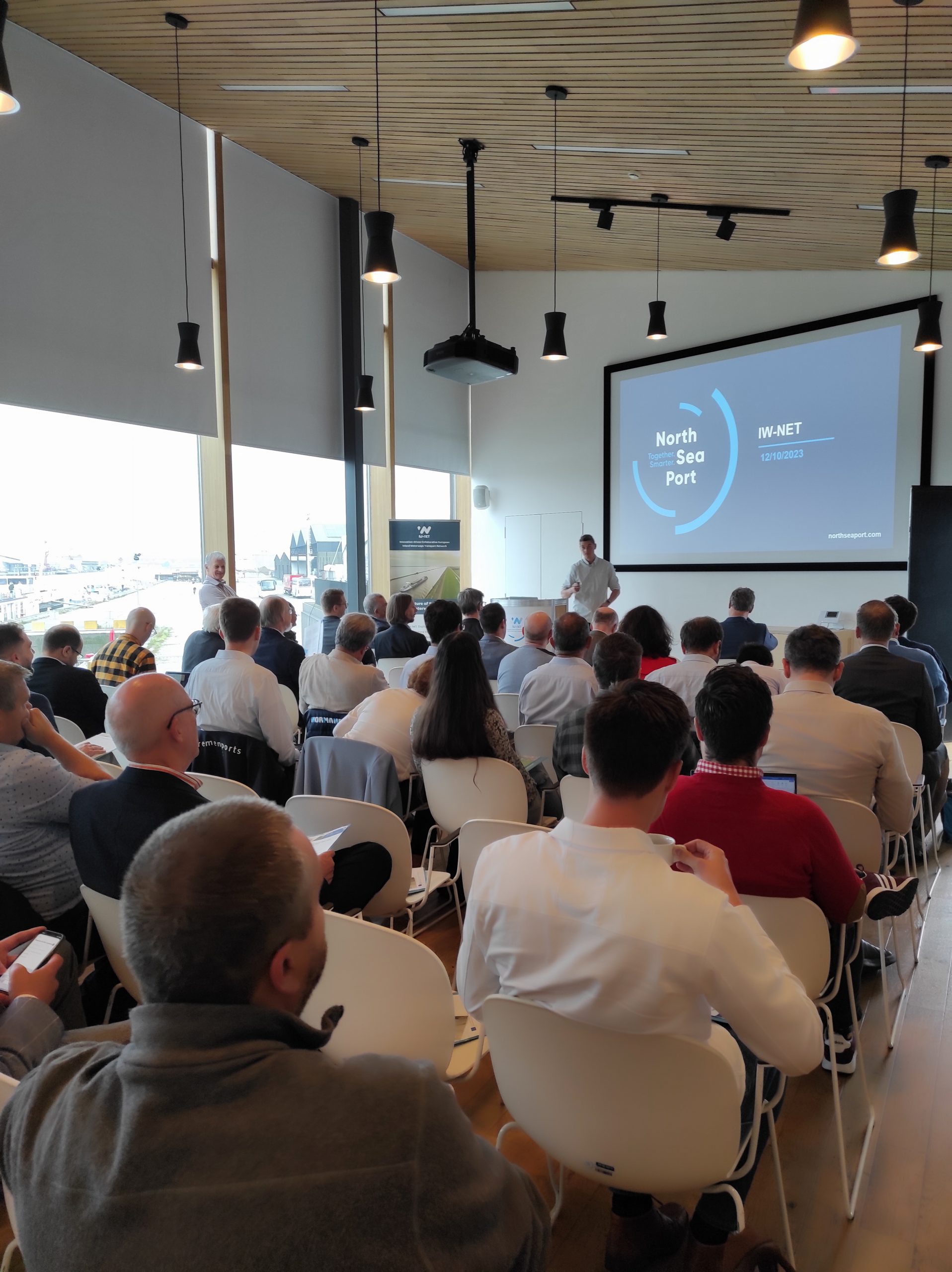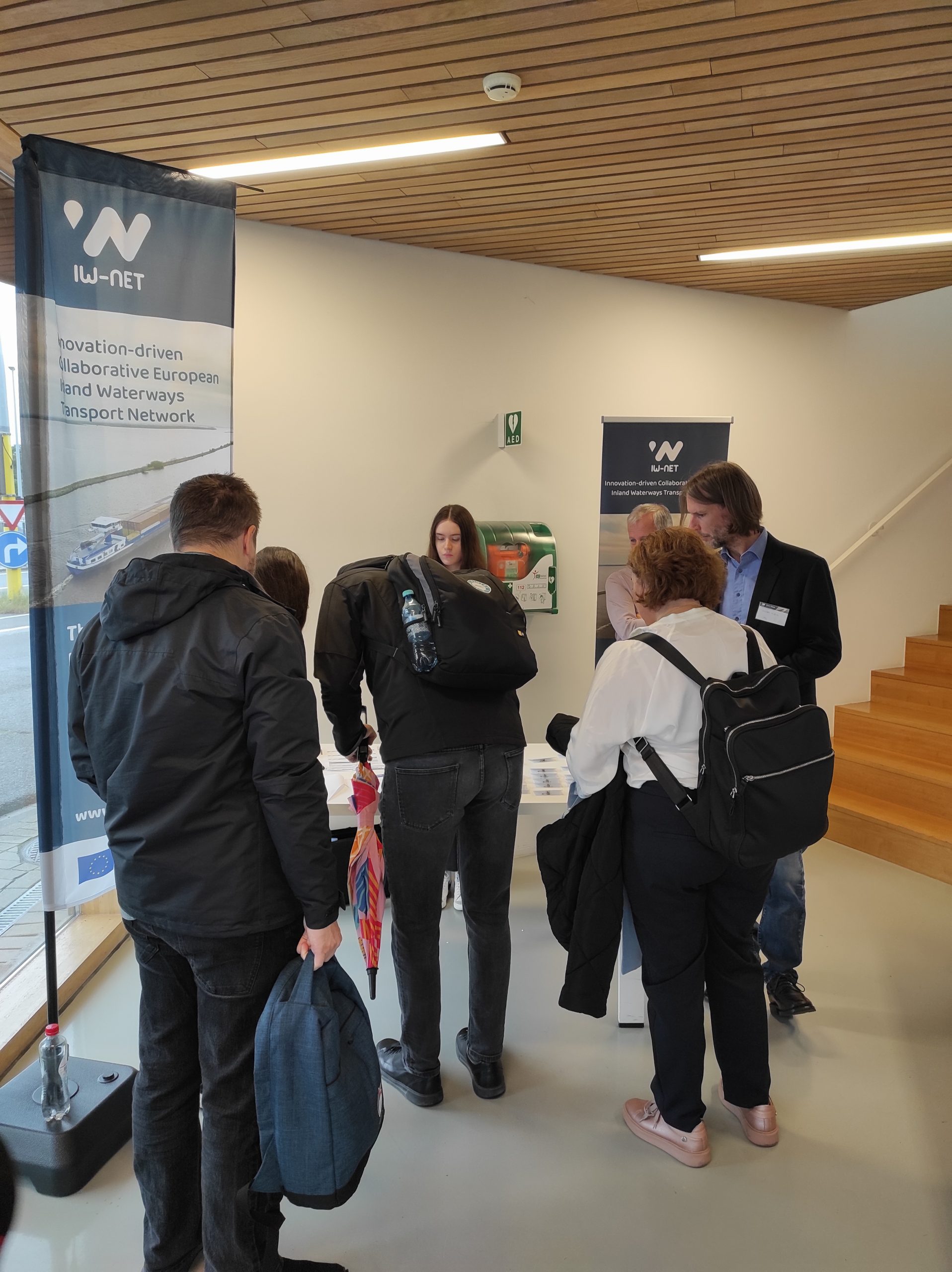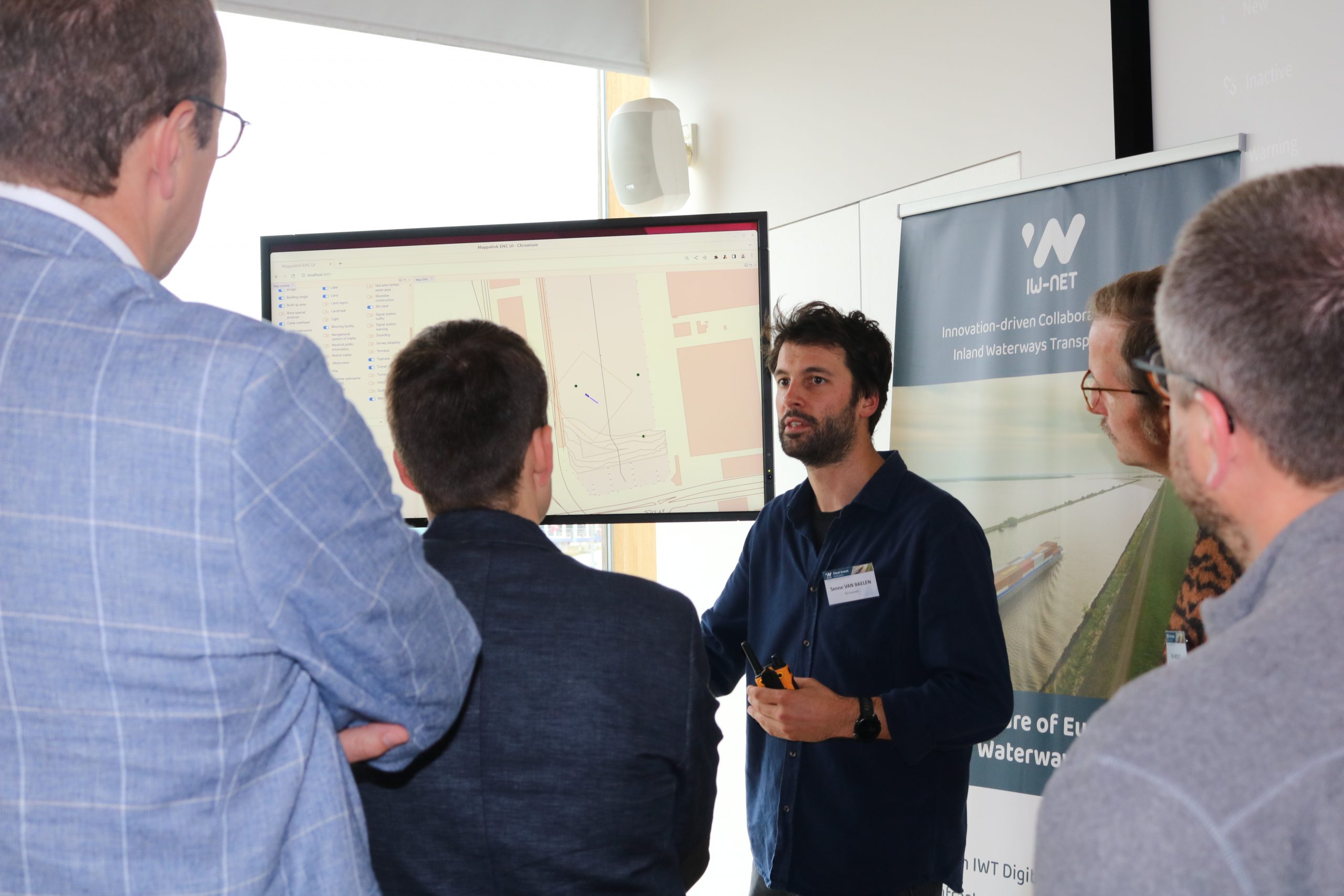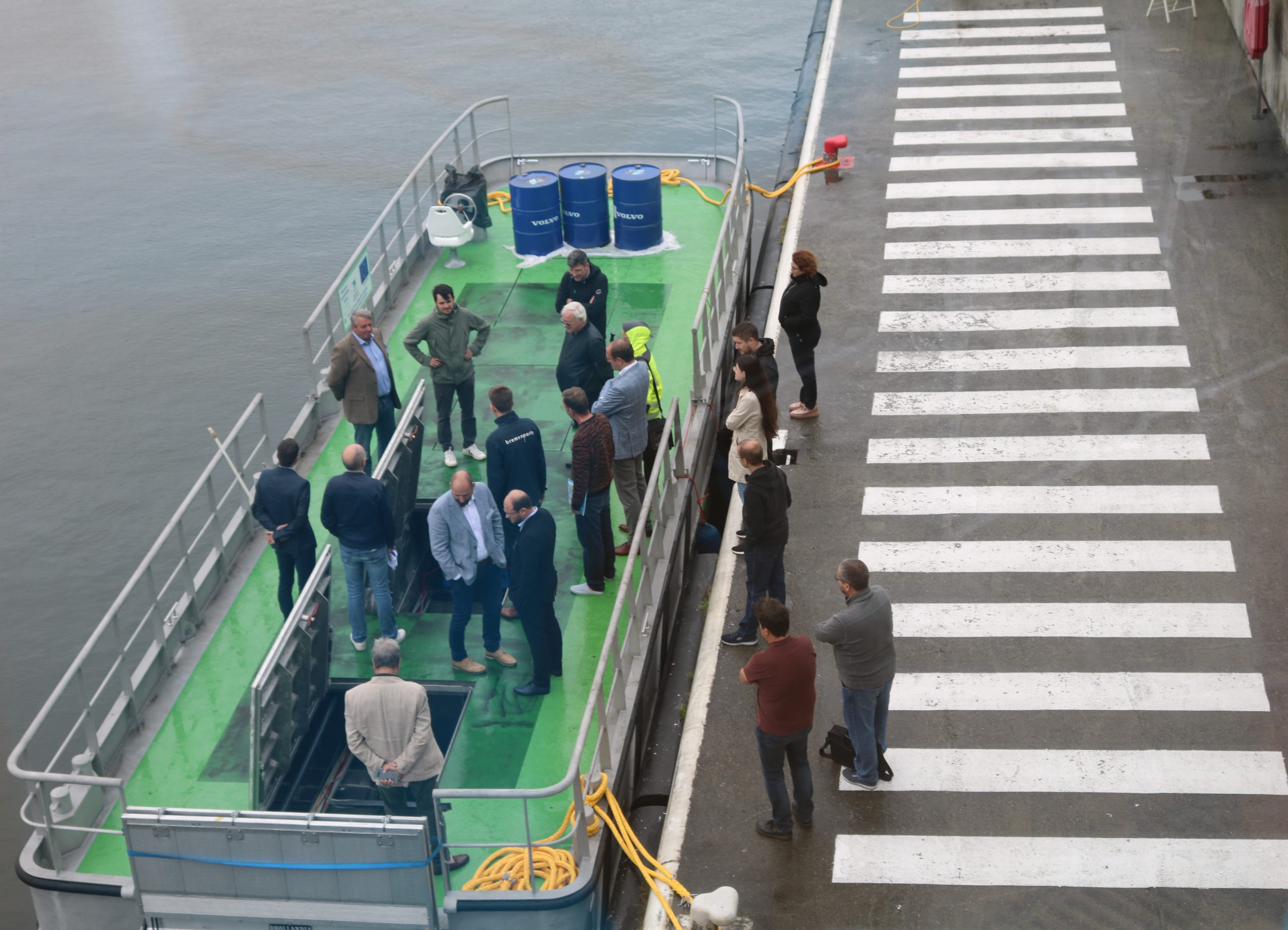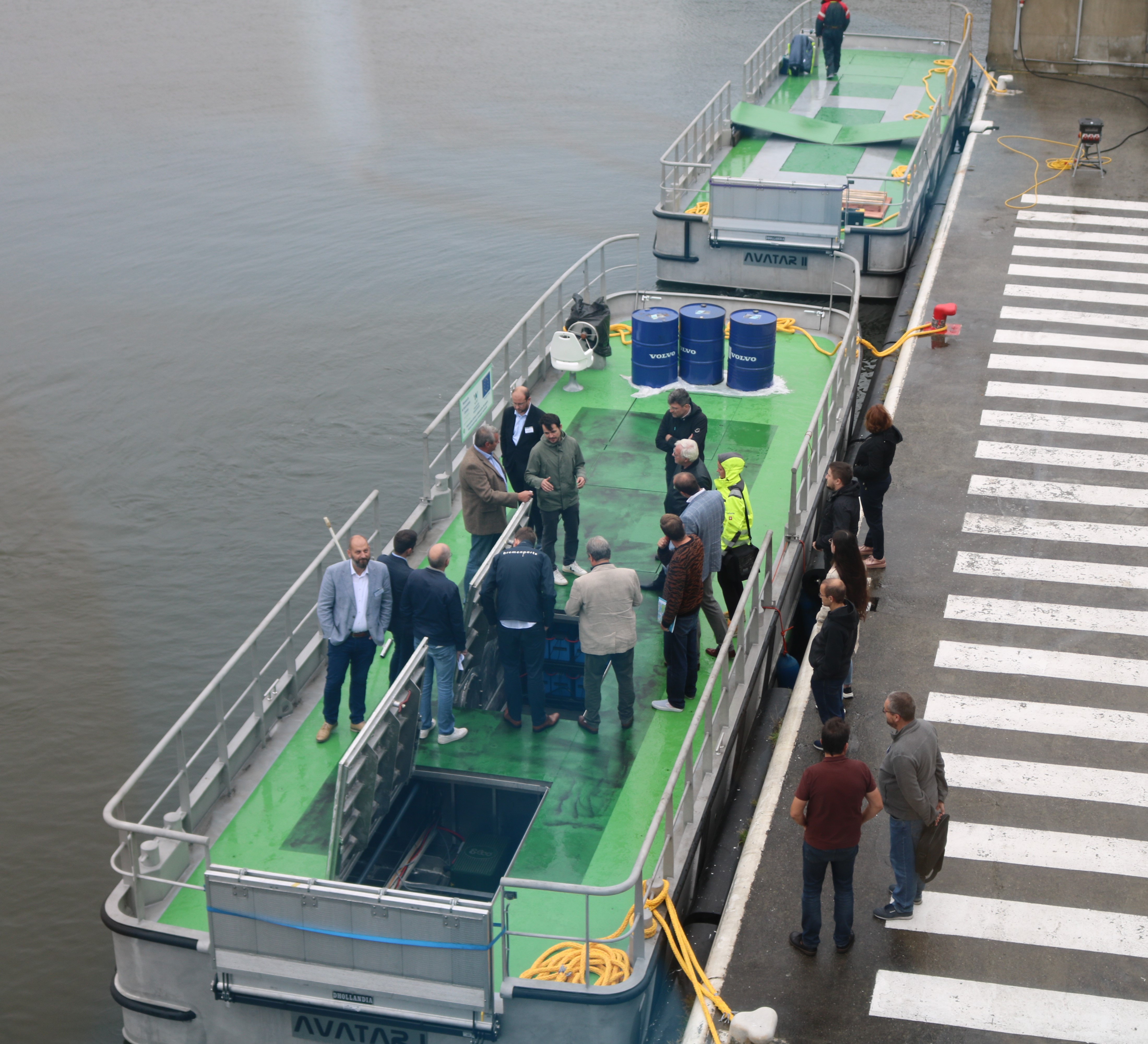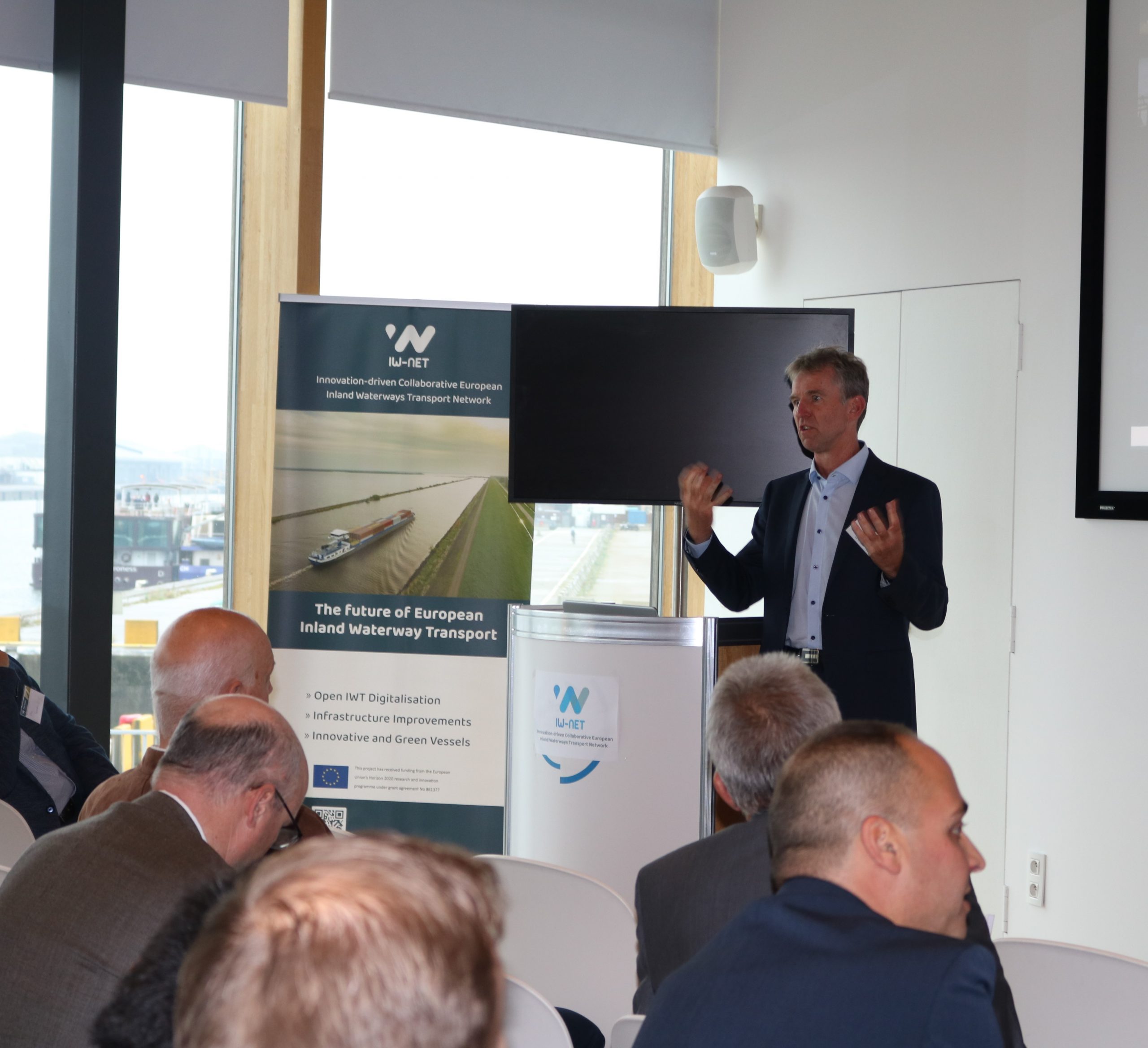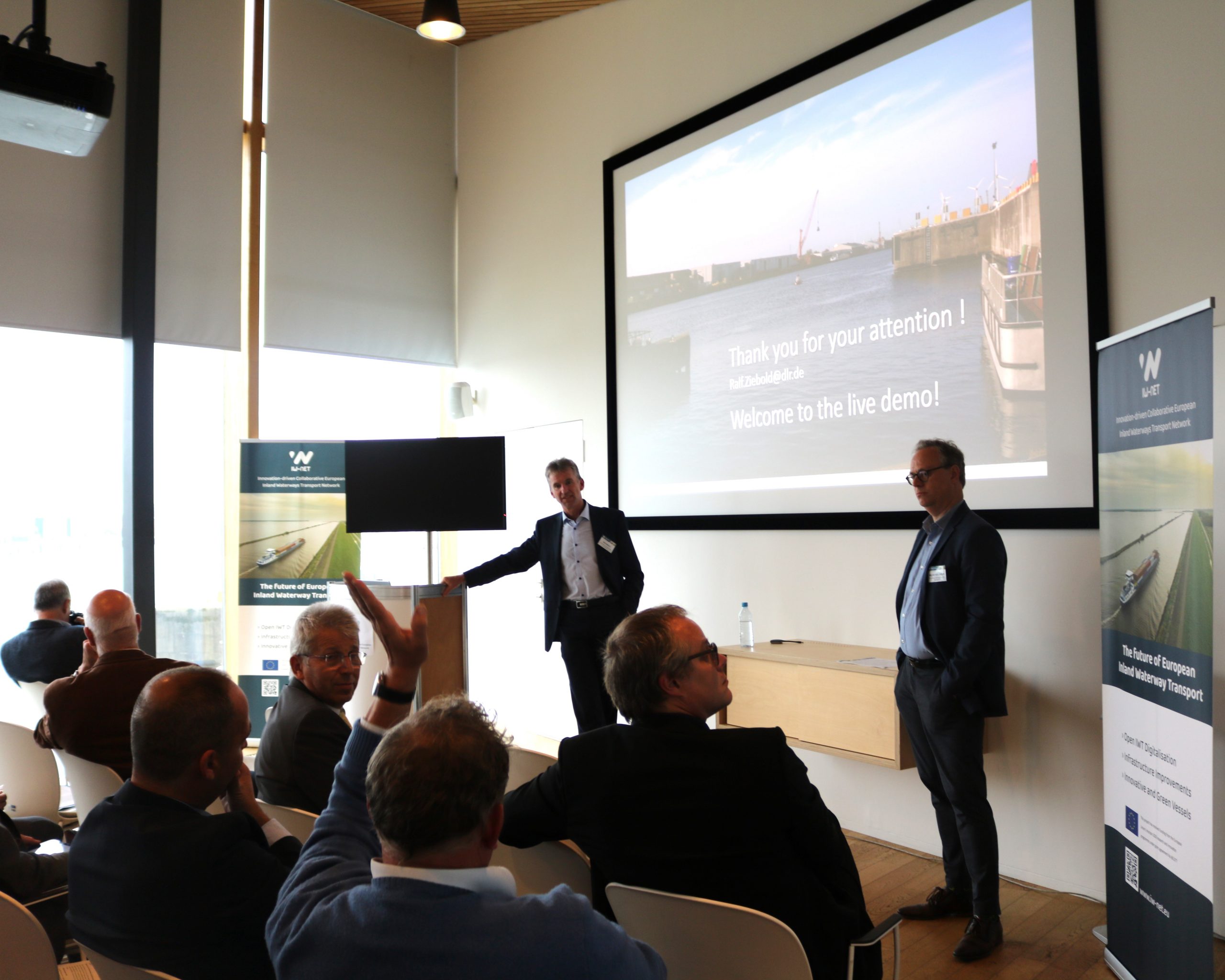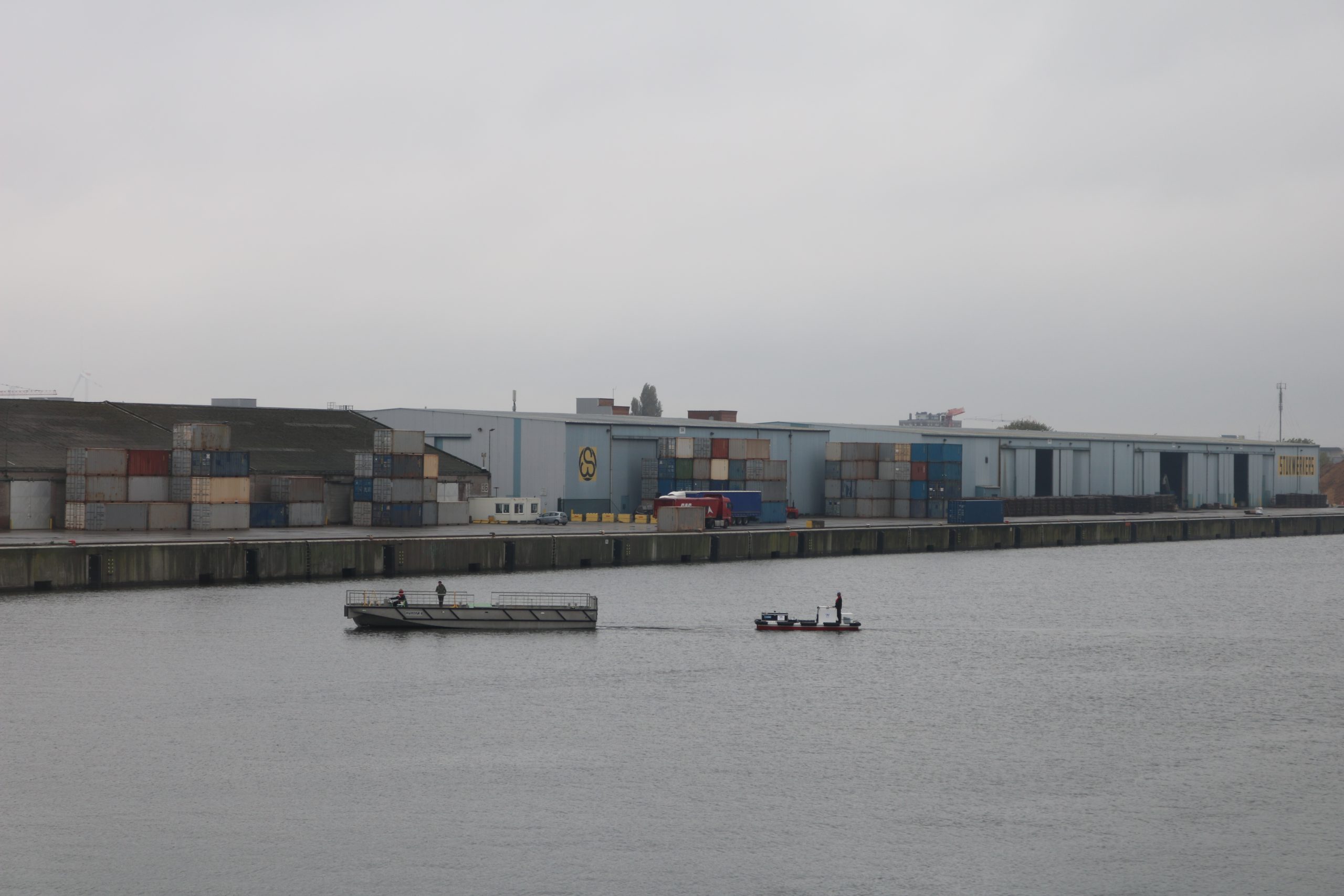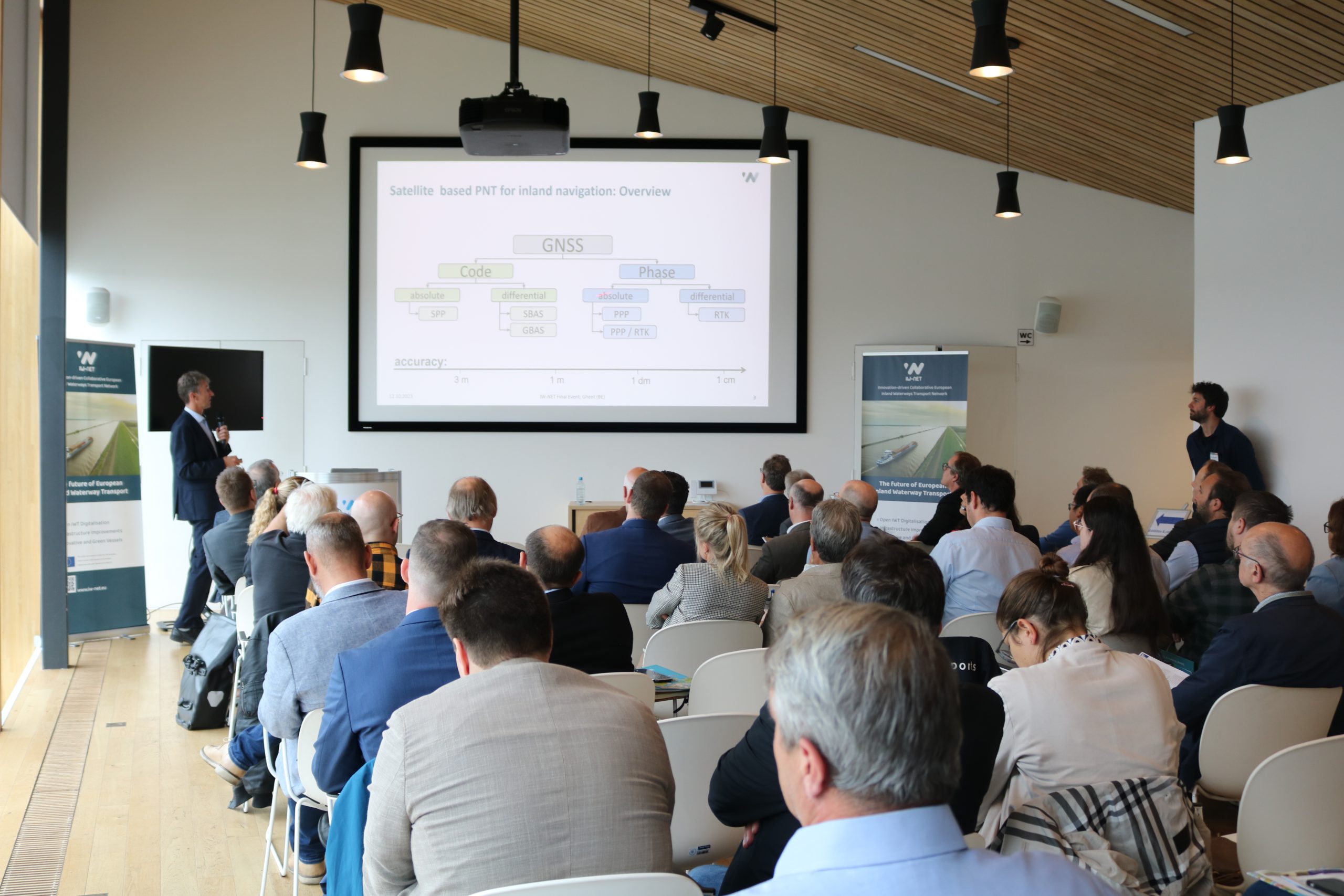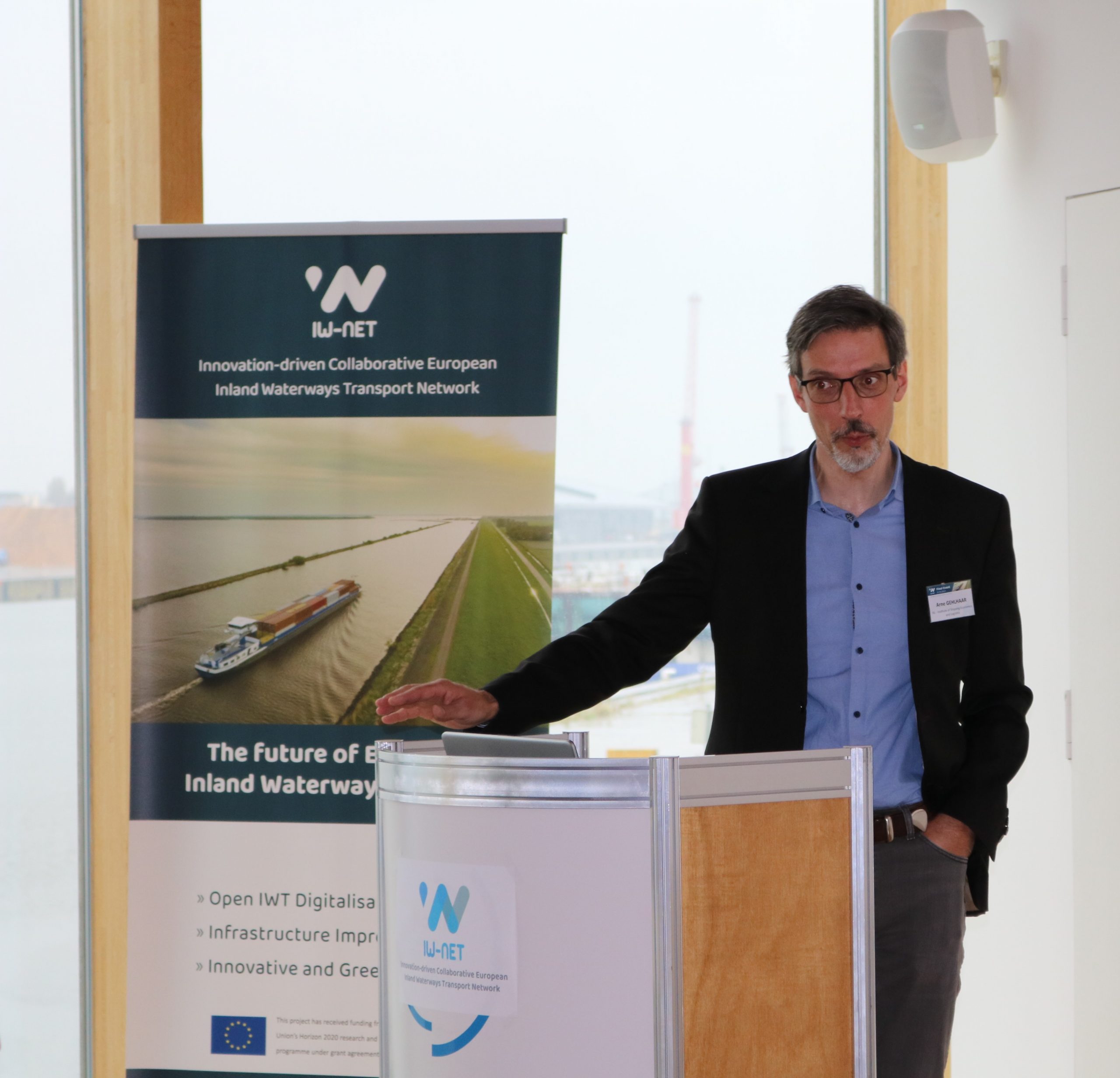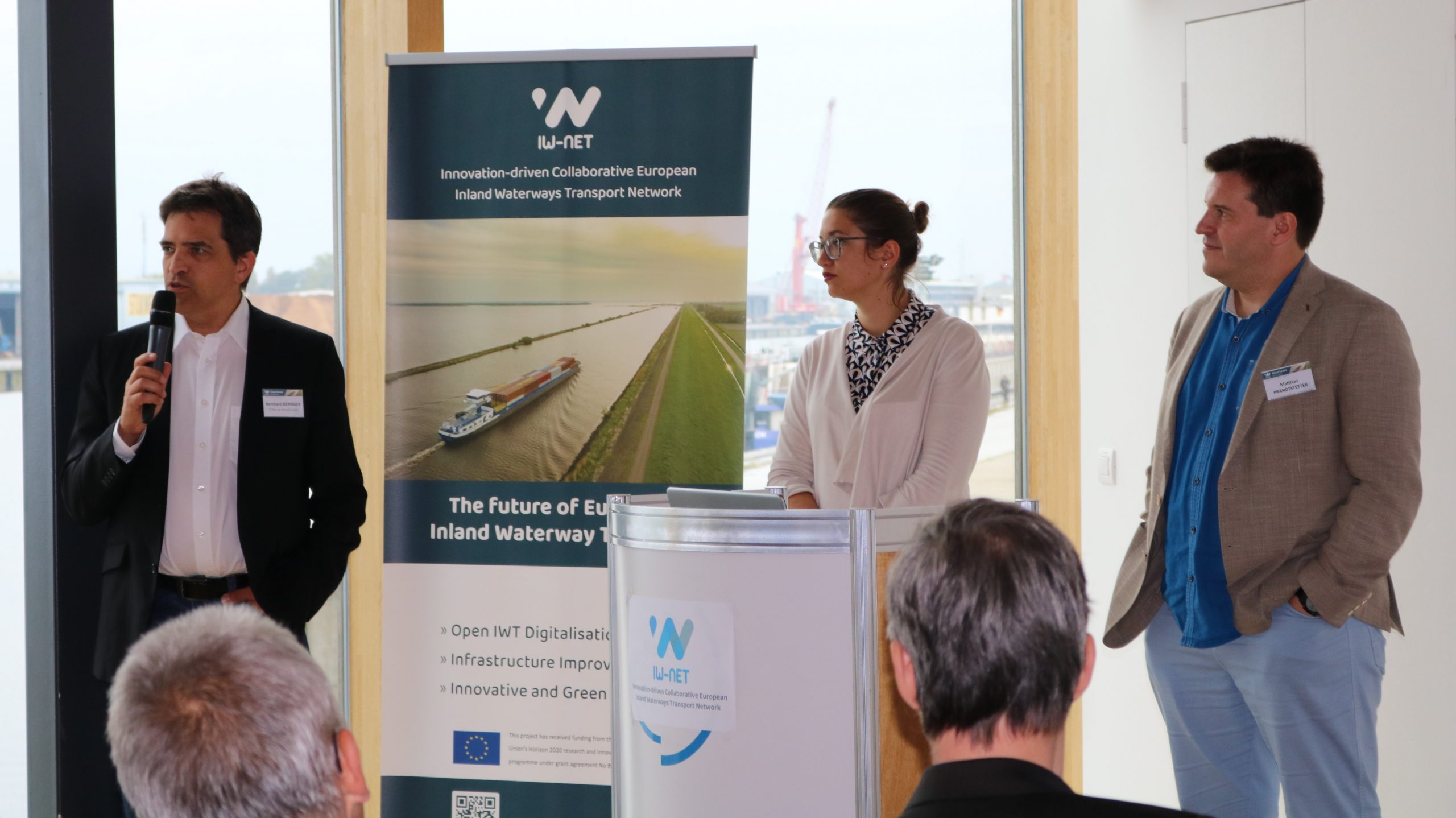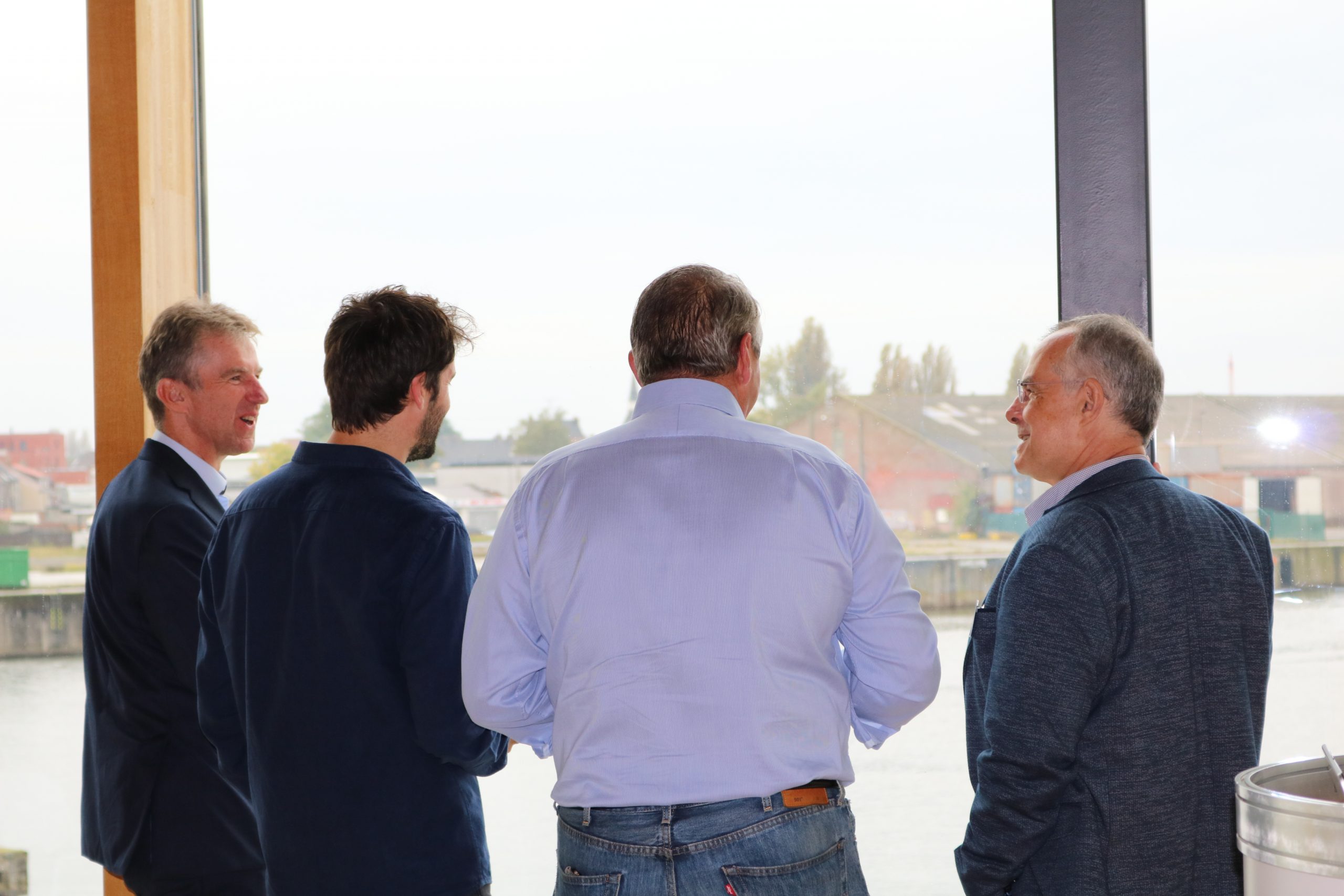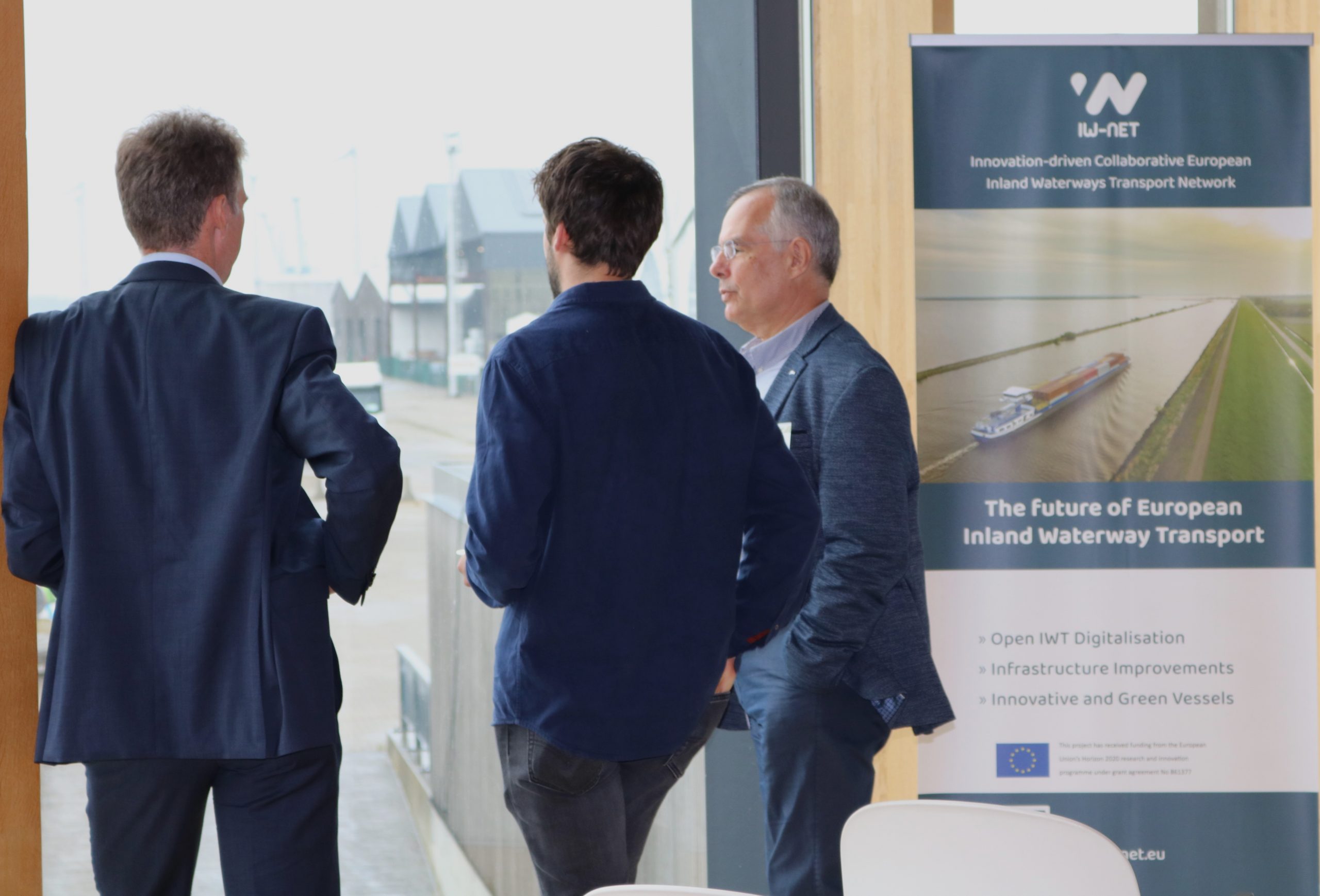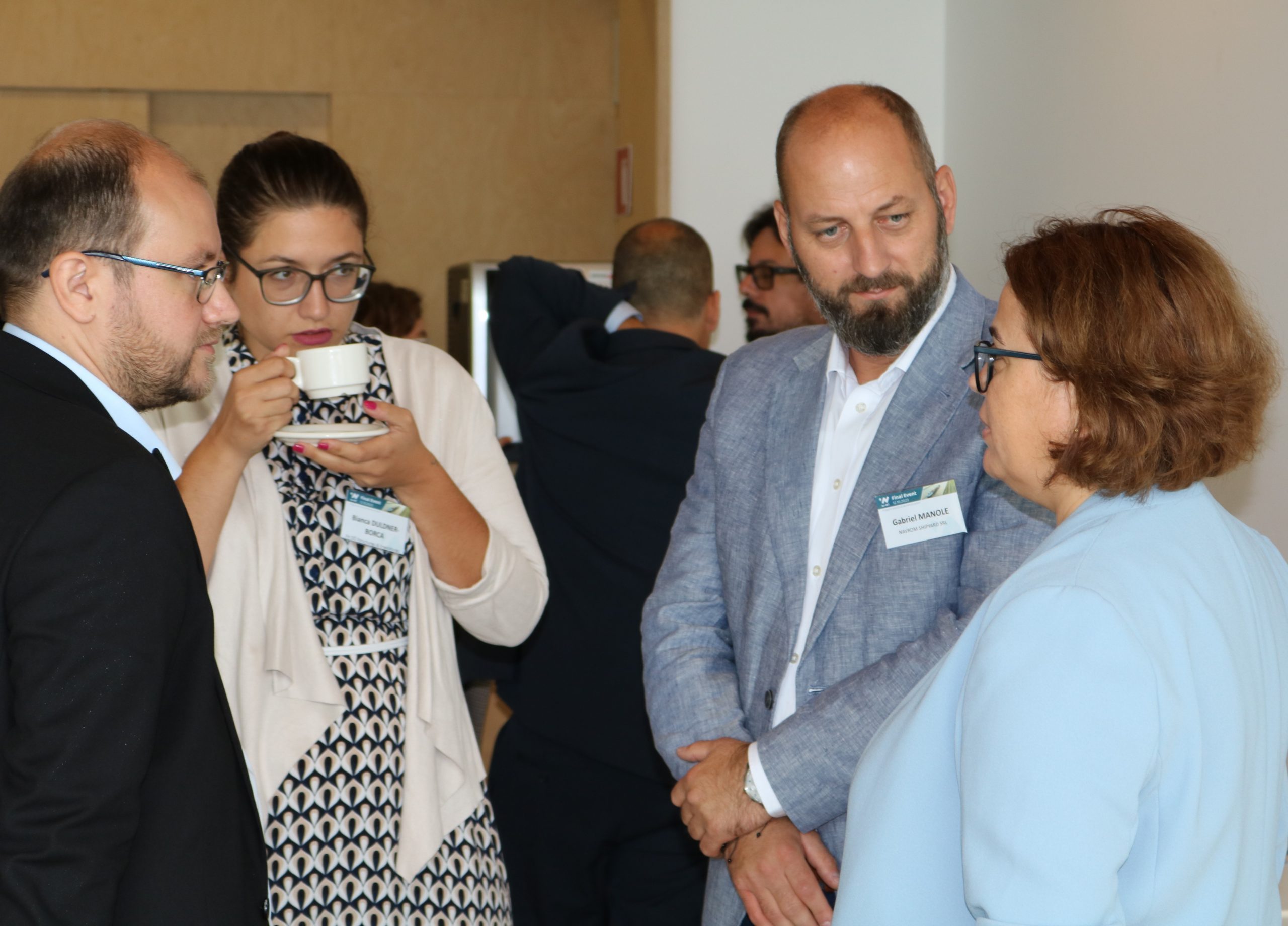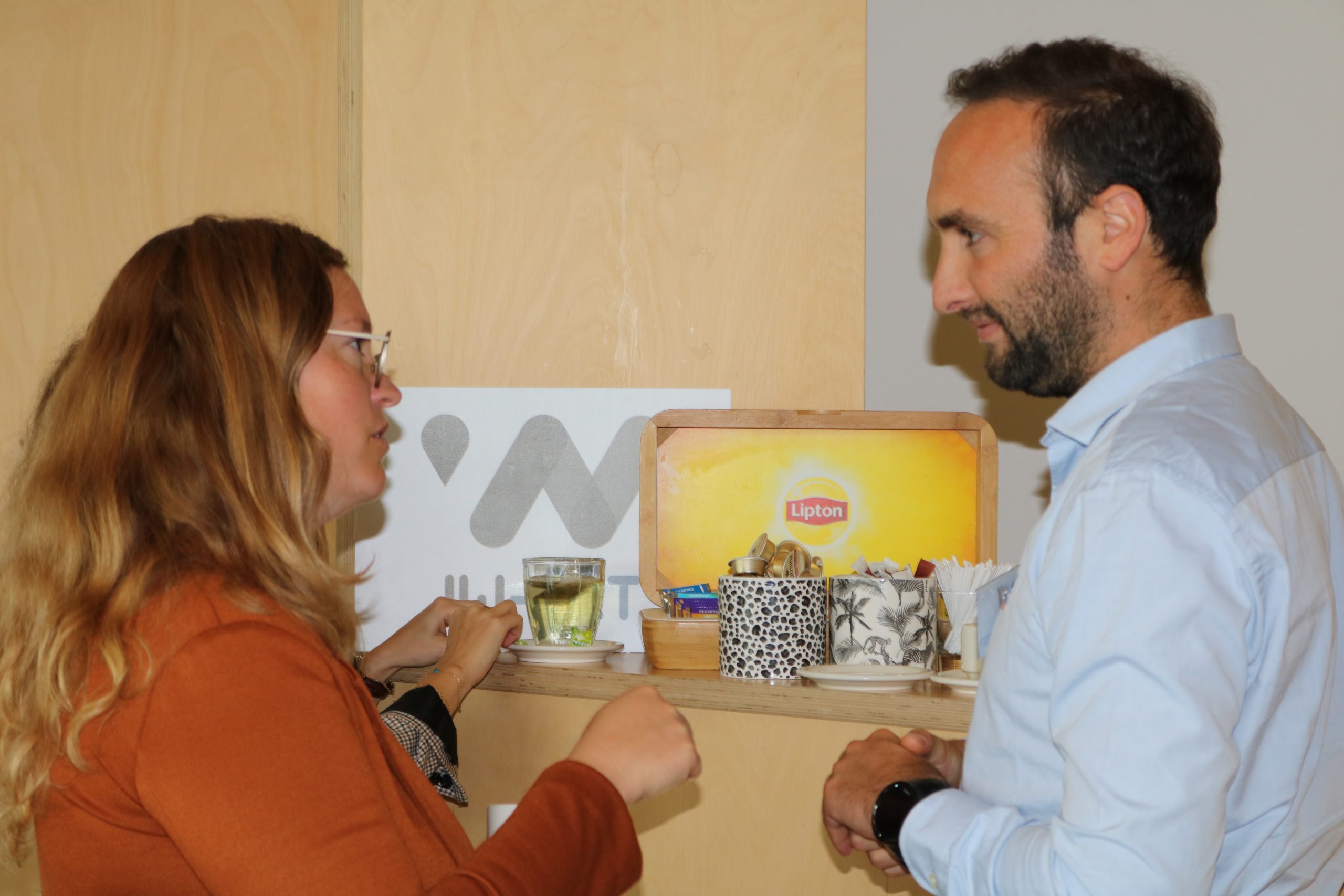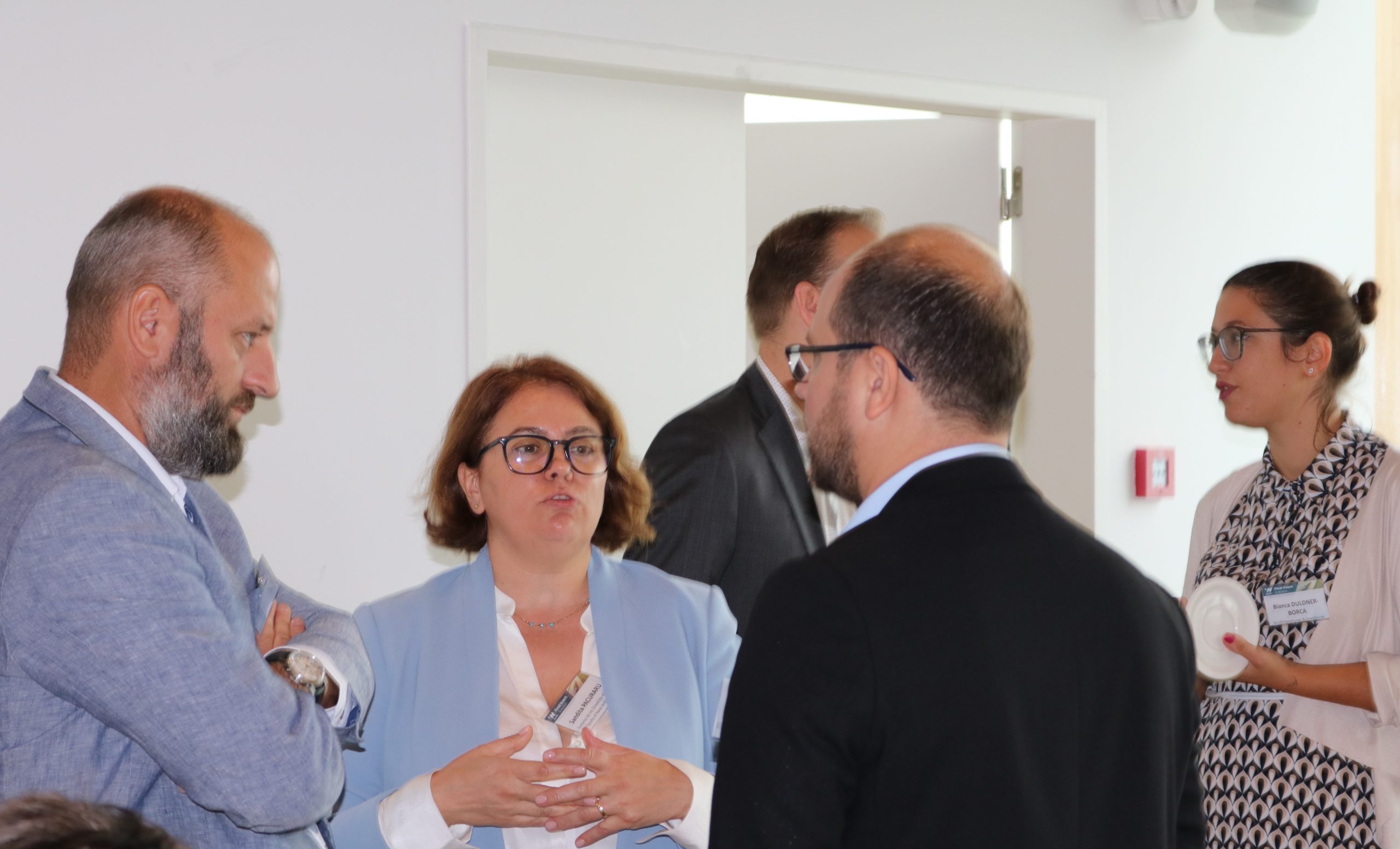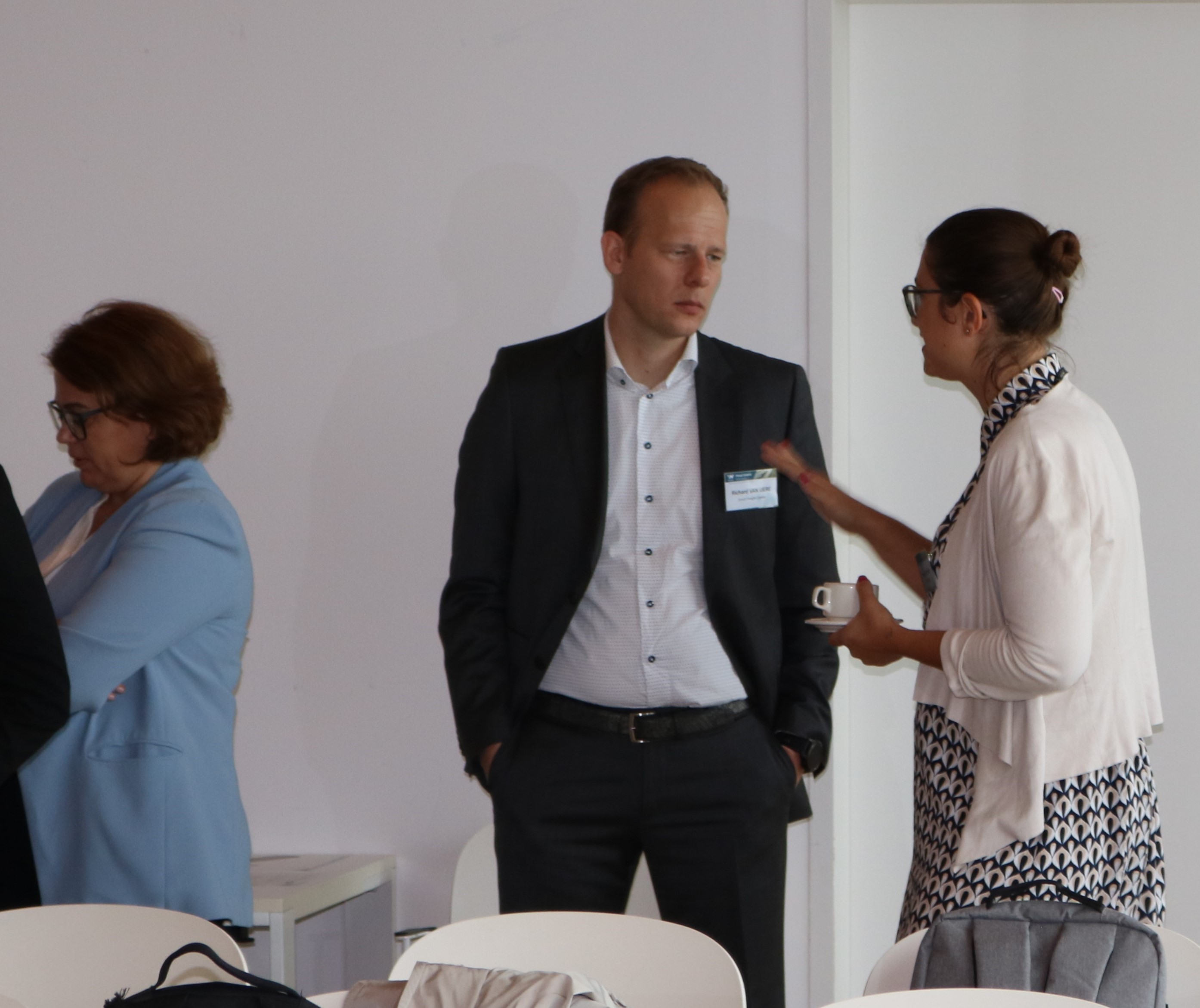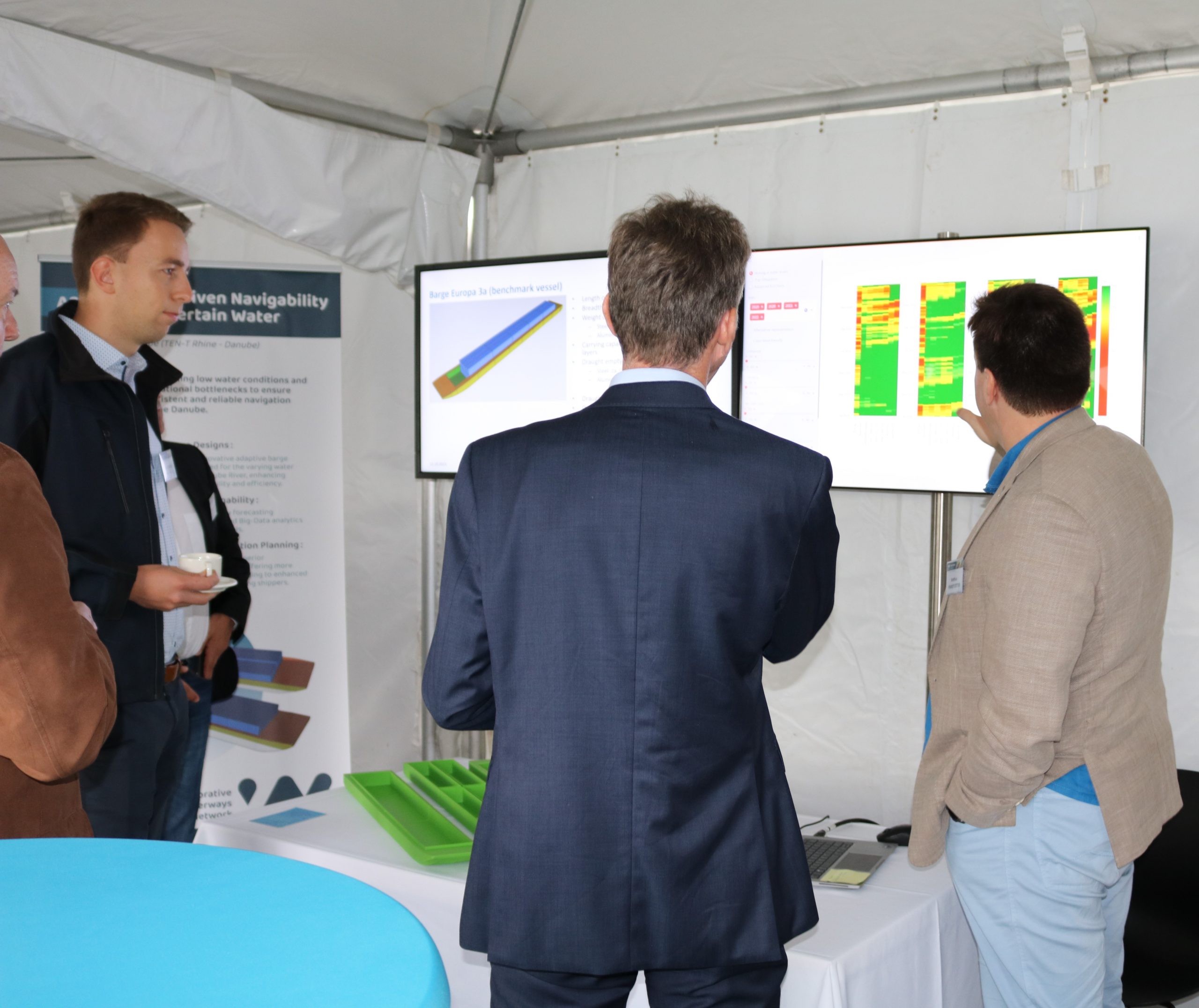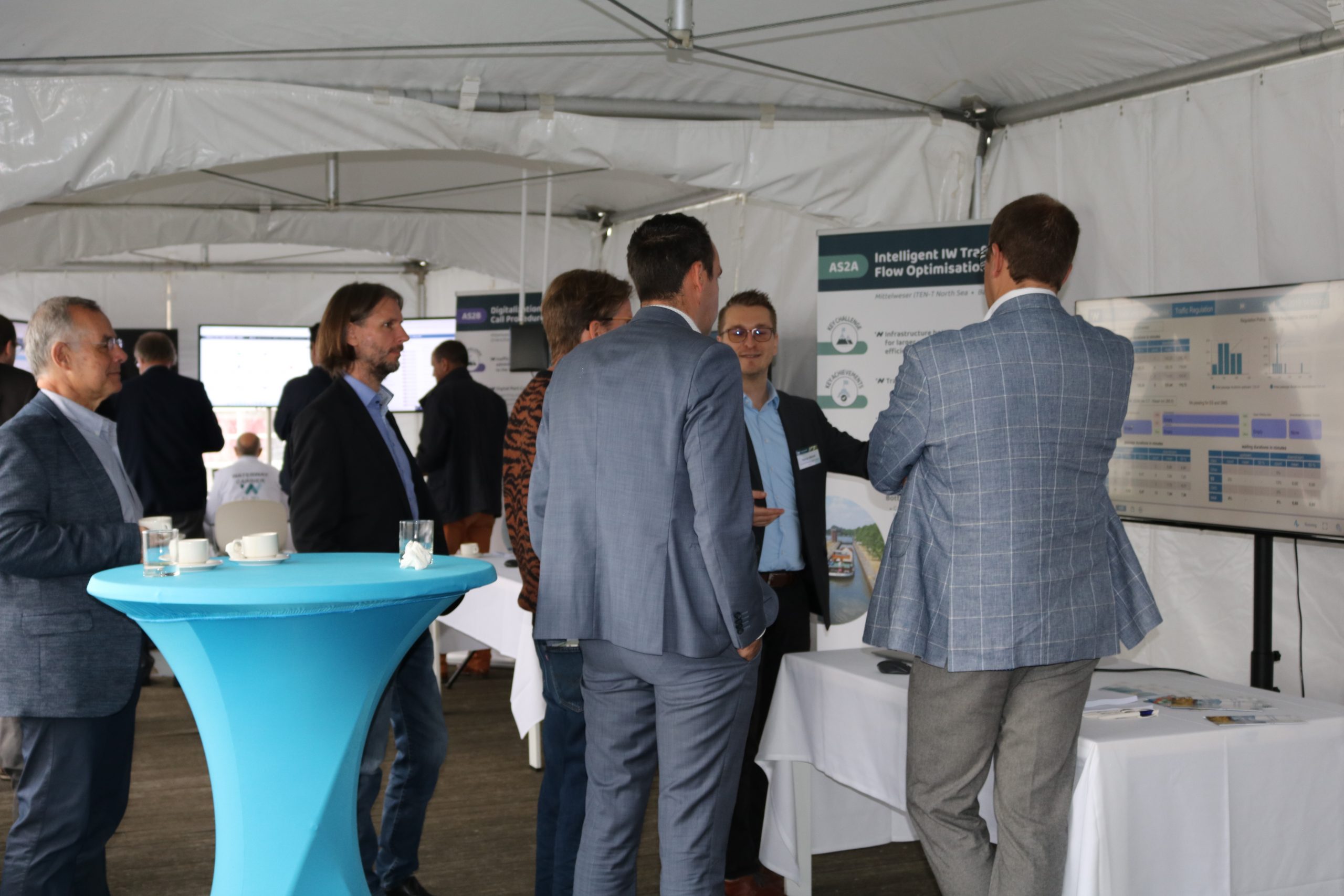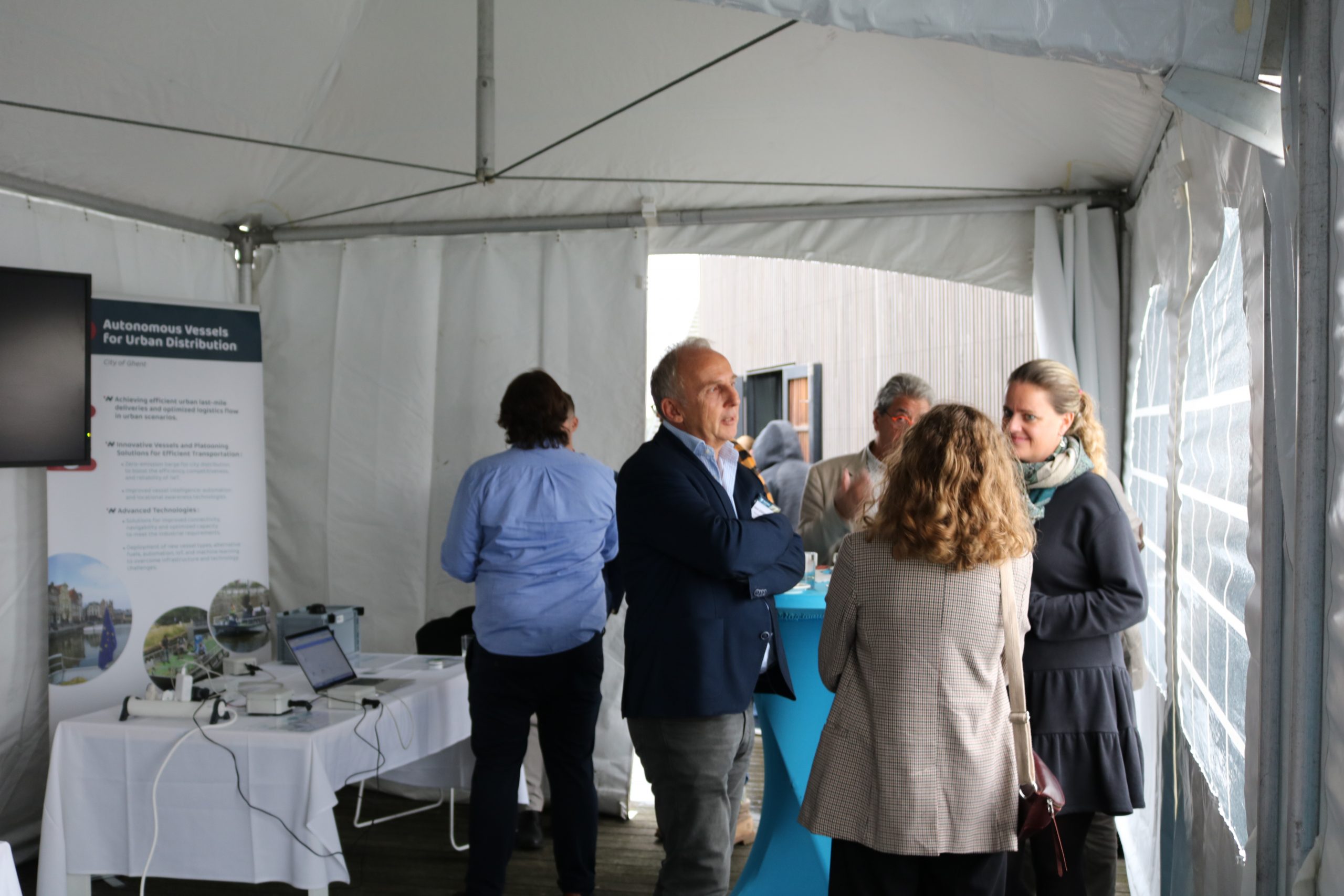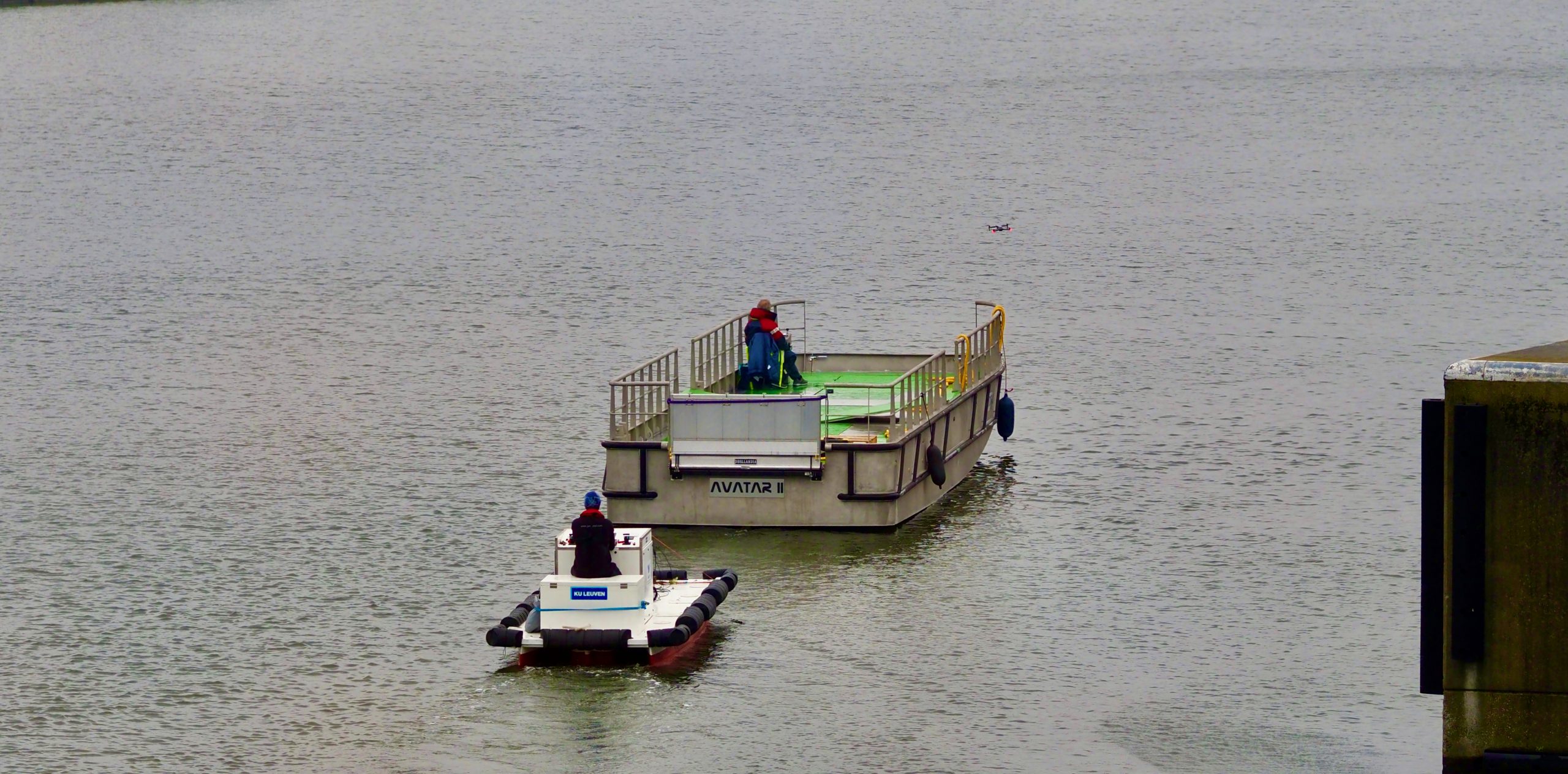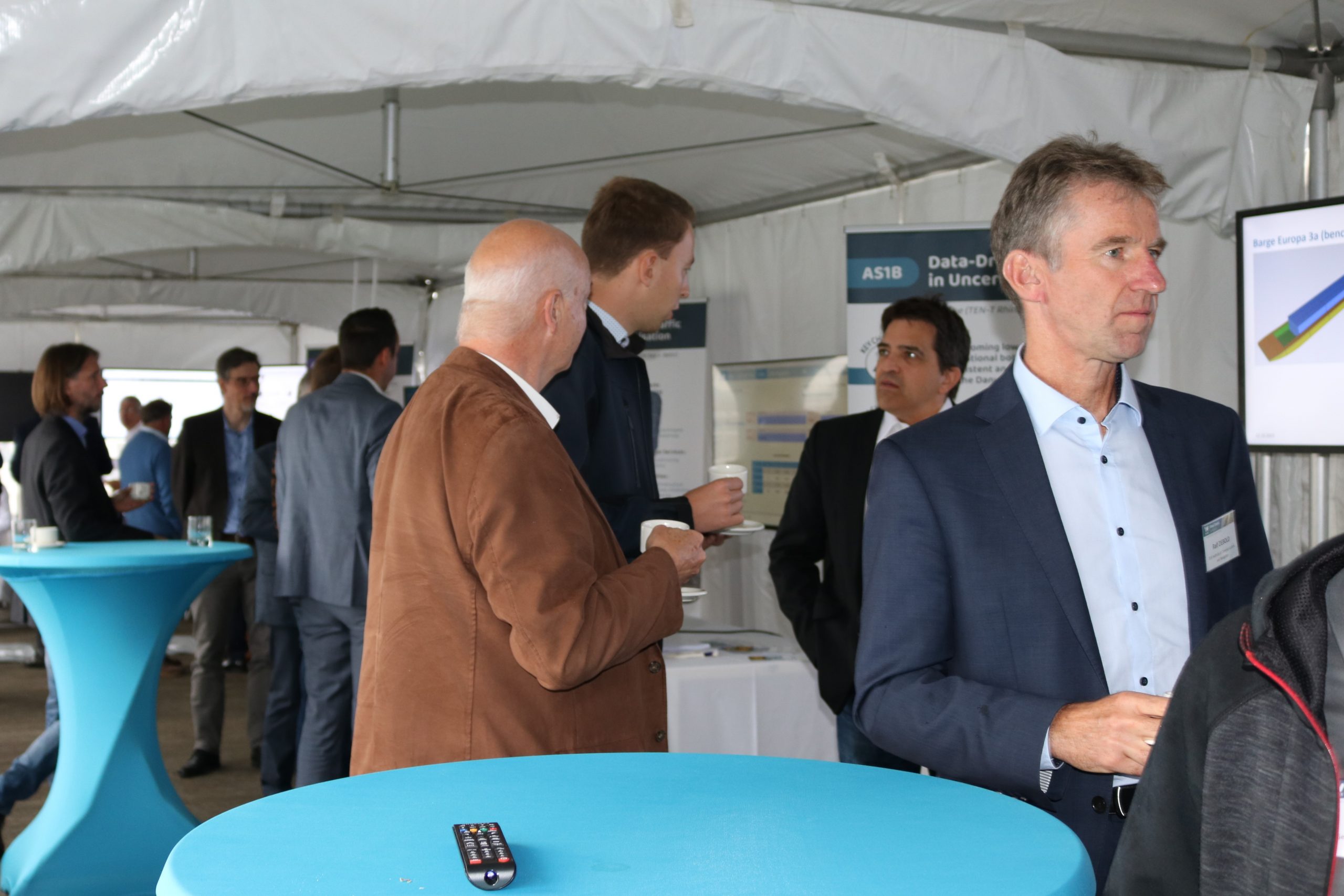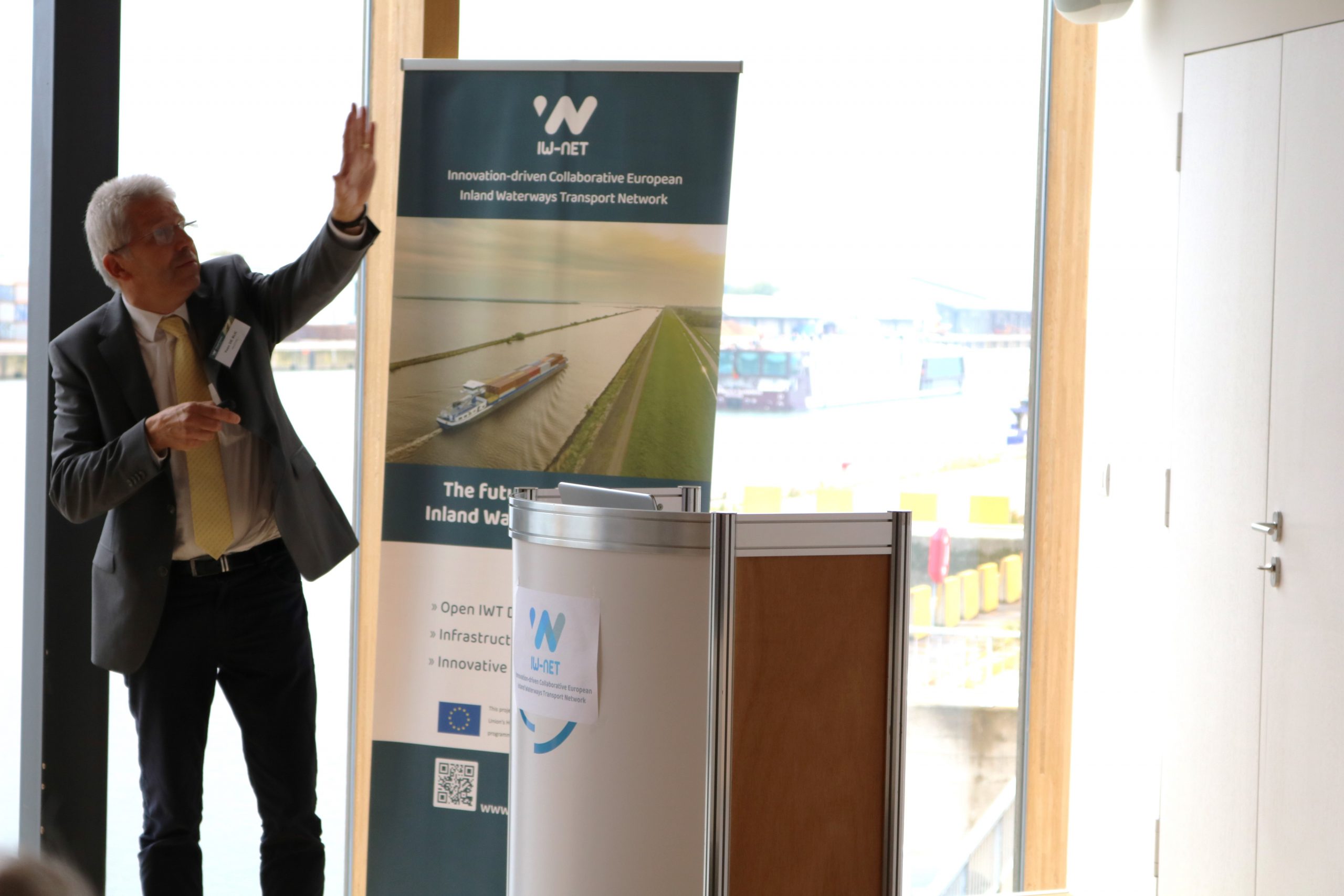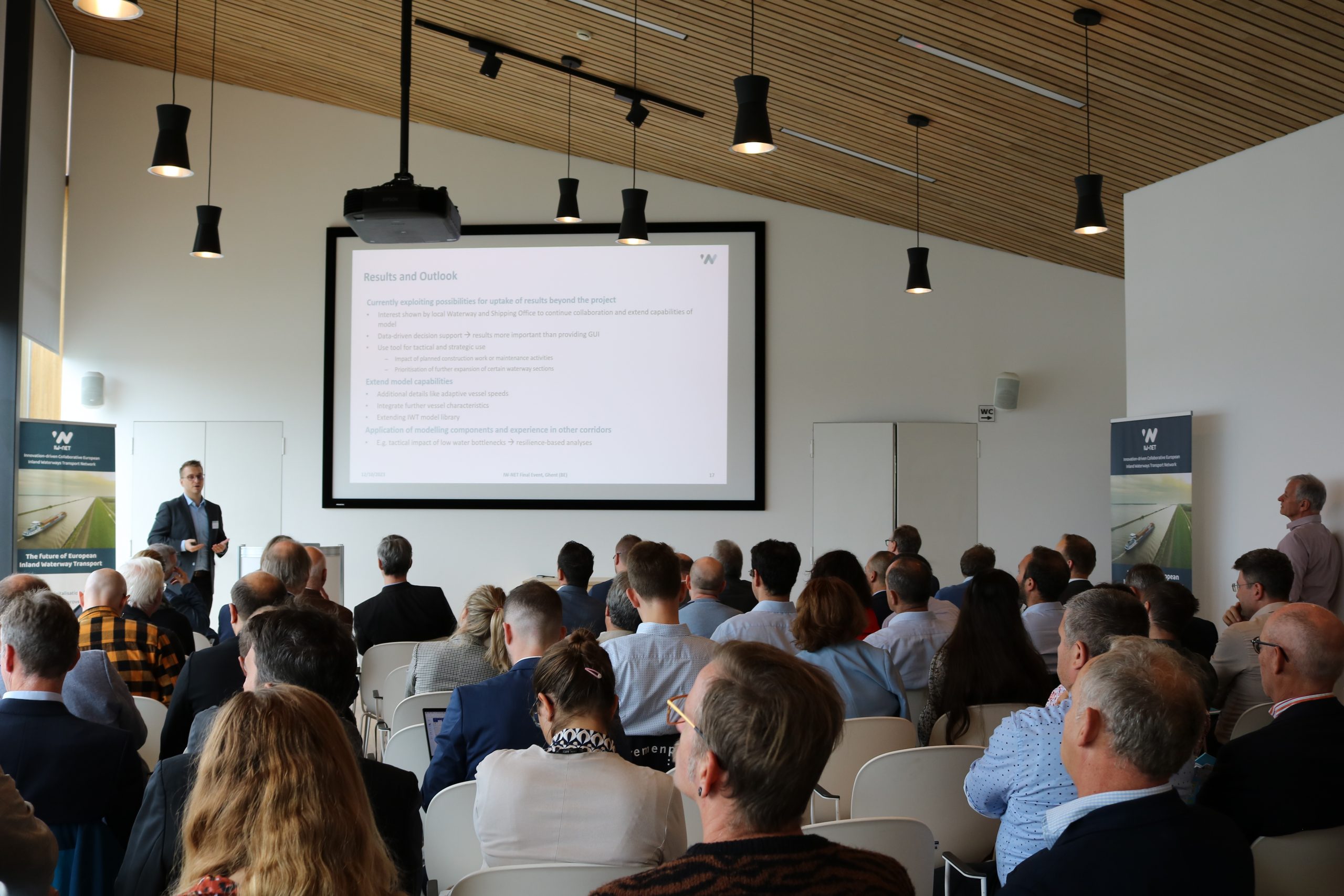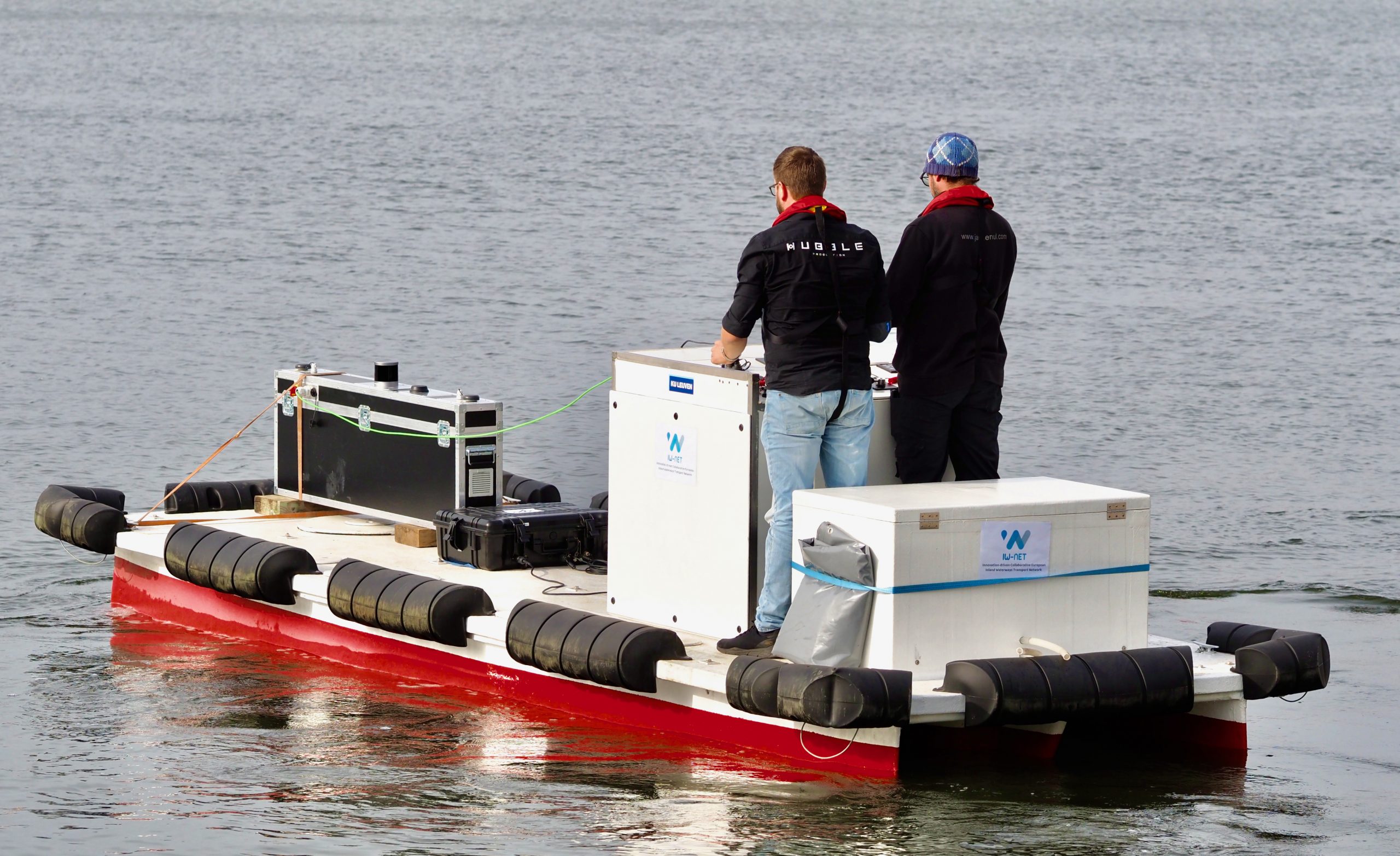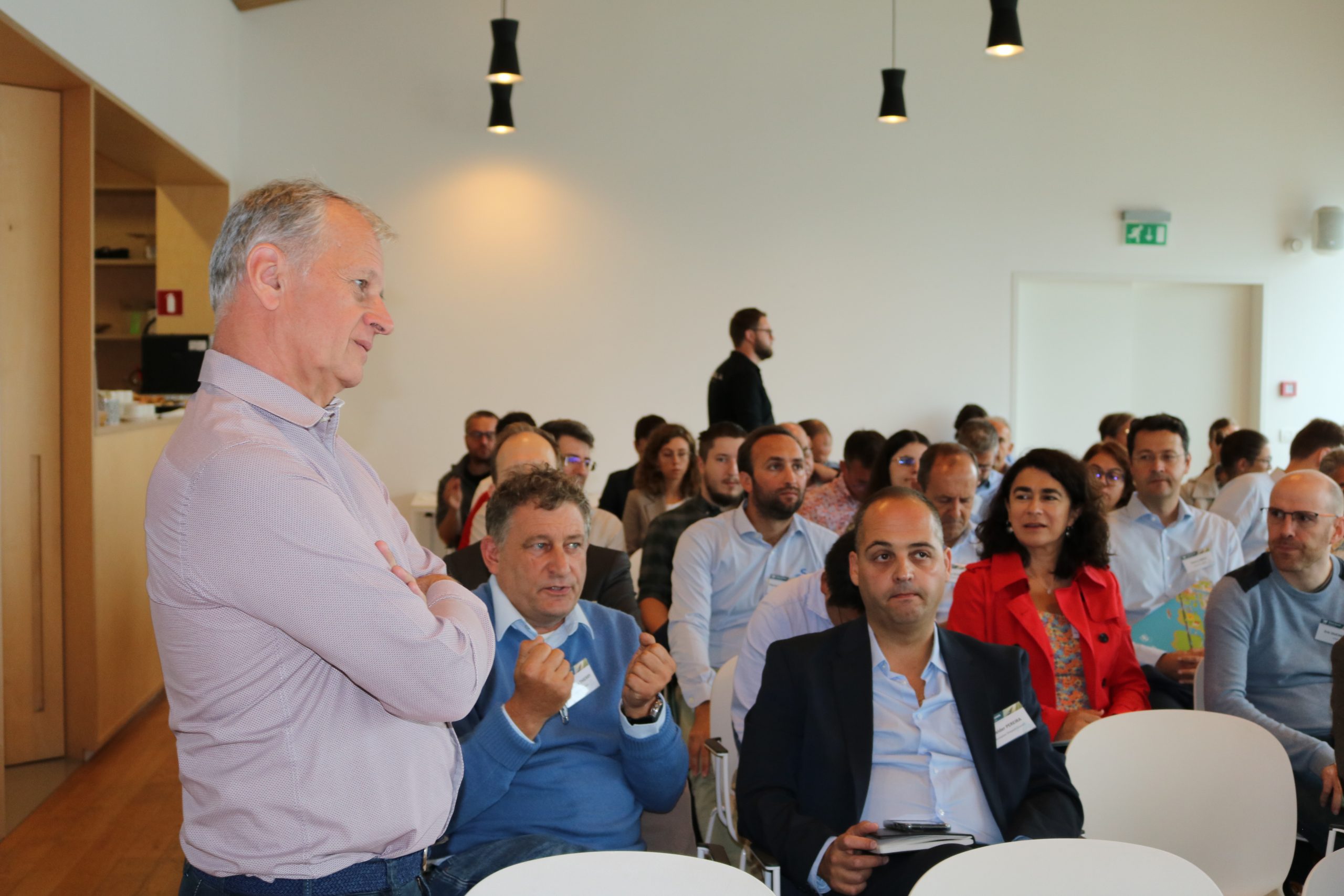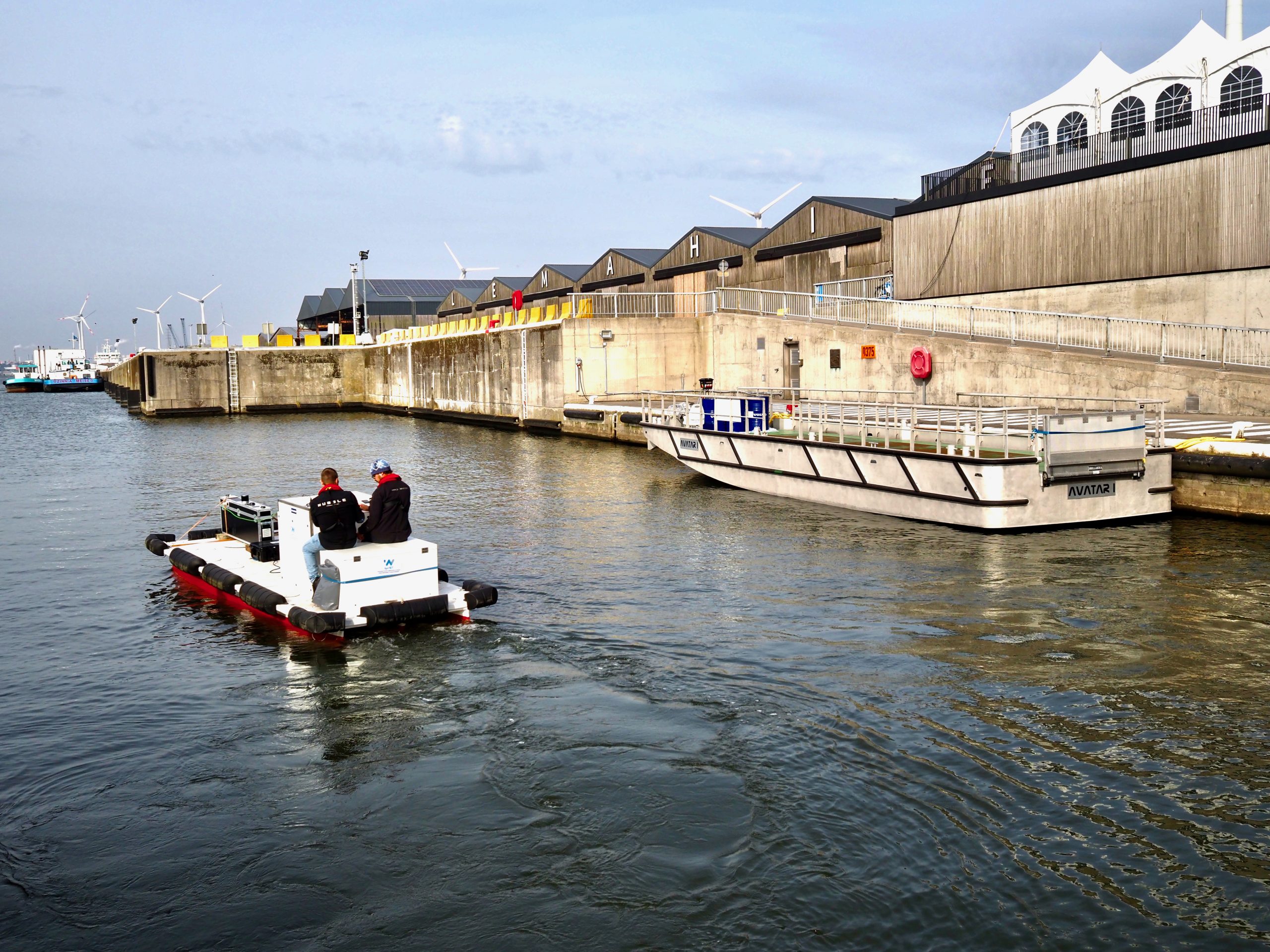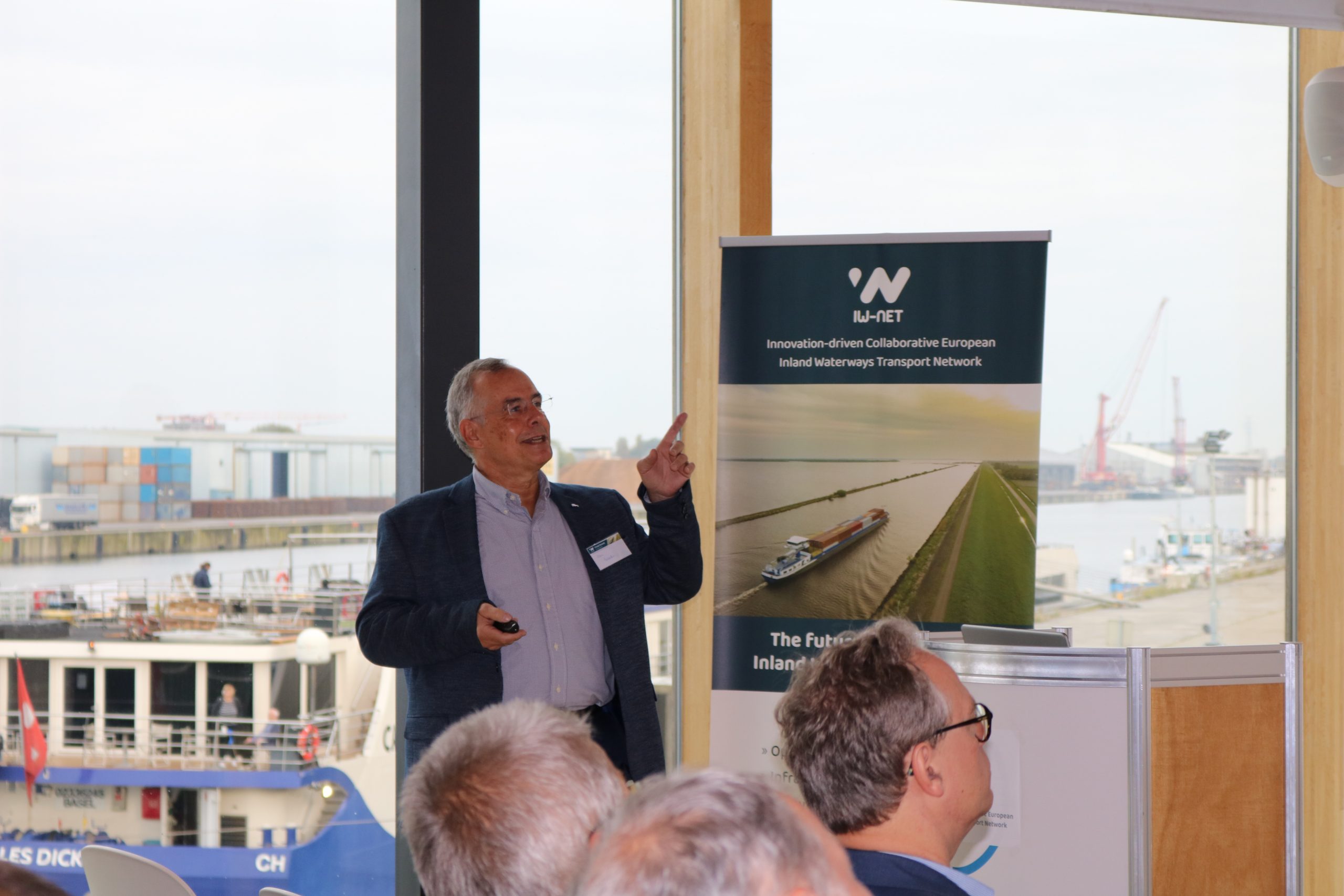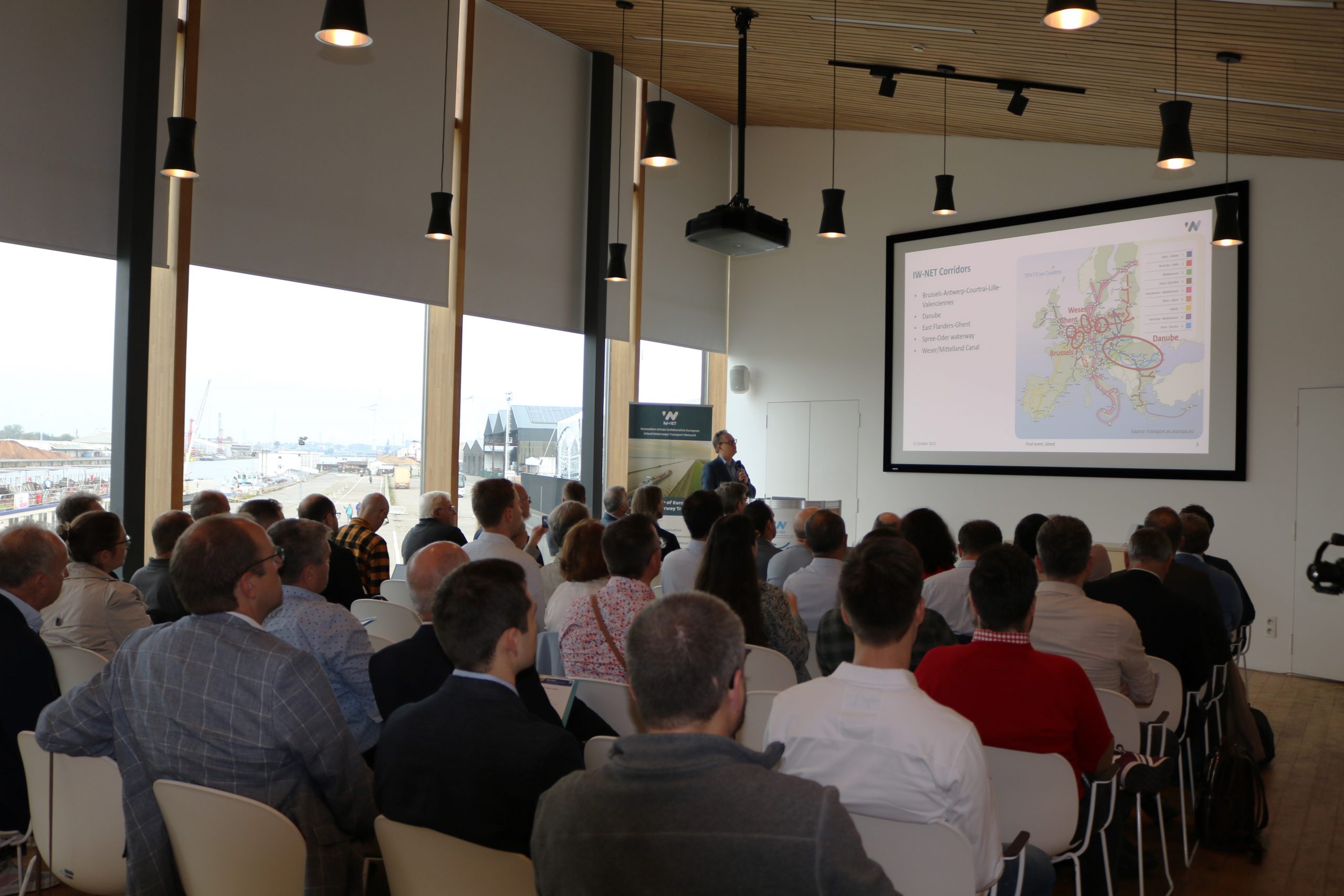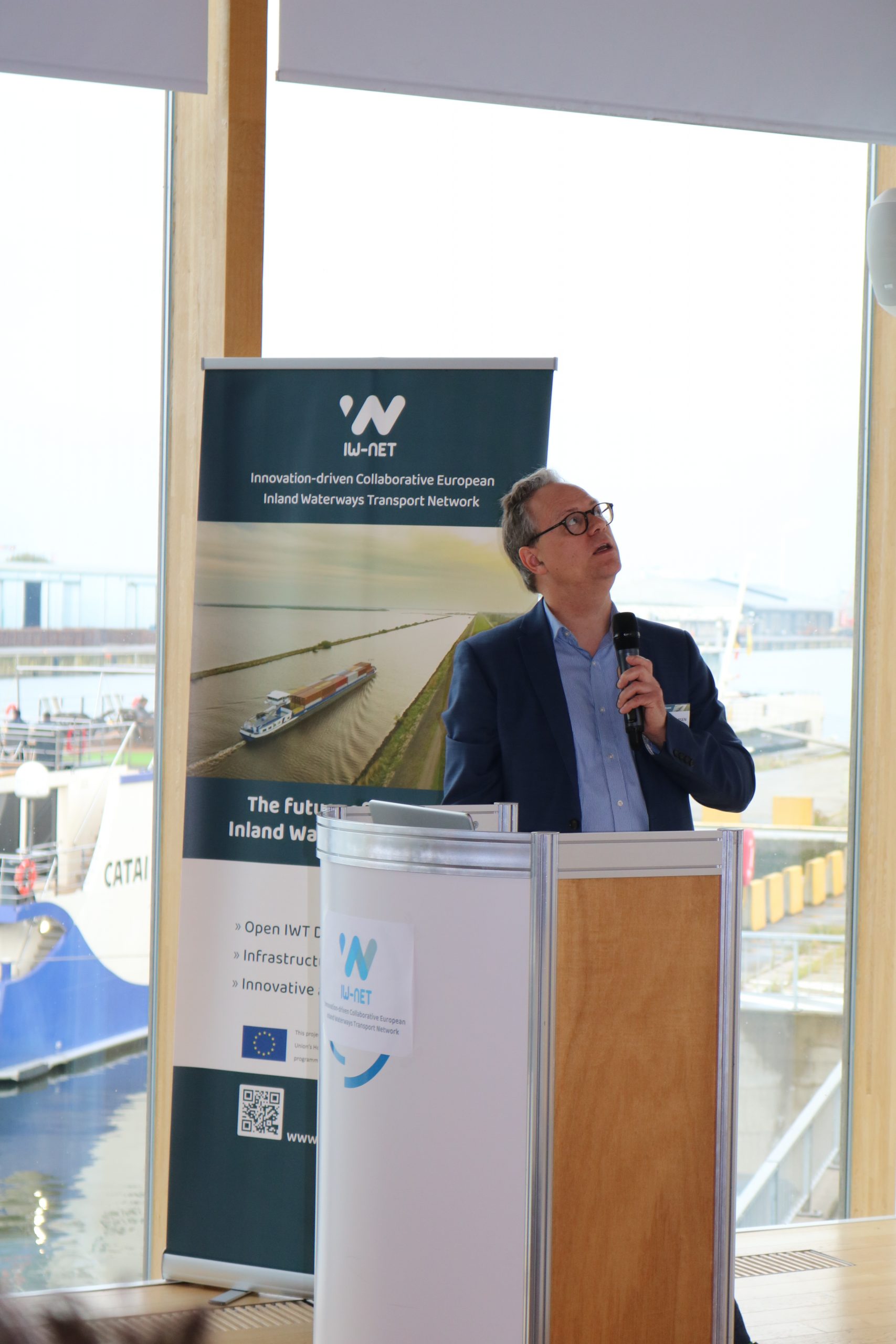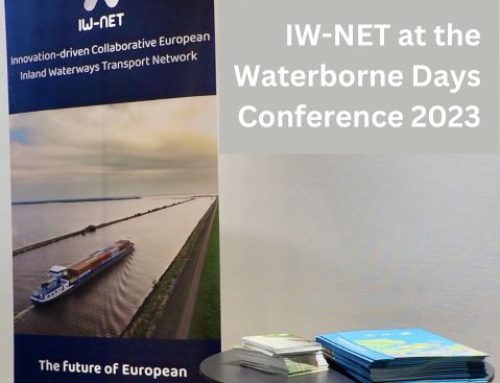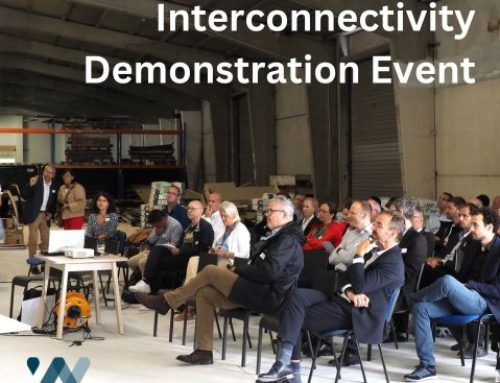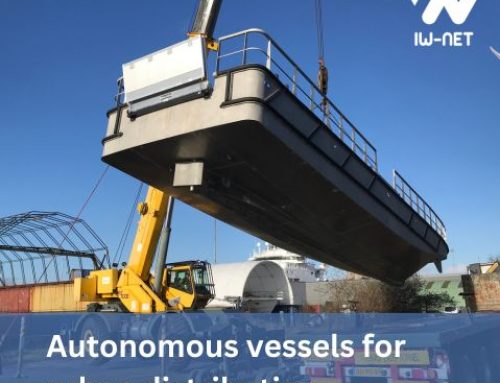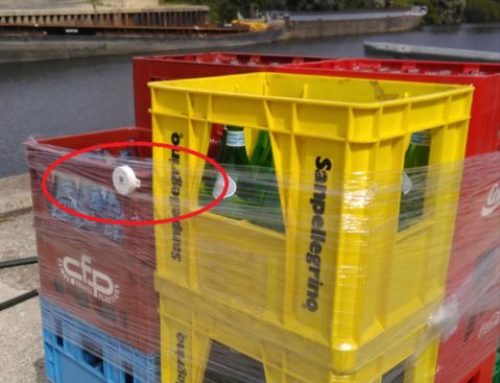On 12 October 2023, the North Sea Port Visitor Centre in Ghent hosted the Final Event of the IW-NET project. With around 70 industry professionals attending the event, the day was dedicated to discussing the findings and outcomes of the IW-NET project.
Upon registration, attendees were greeted by the welcoming coffee aroma, setting the stage for a series of profound discussions and deliberations. The proceedings were formally inaugurated by Karel Saey from North Sea Port, followed by an insightful overview by the Project Coordinator, Nils Meyer-Larsen.
Zisis Palaskas gave a presentation on the pivotal role of data analytics in decision-making processes for inland waterway transportation, underscoring the project’s commitment to leveraging data-driven insights. Patrick Specht continued the momentum with a deep dive into the optimization of IWT flows, complemented by Yves de Blic’s explanations on intermodal urban last-mile transport with tack & trace.
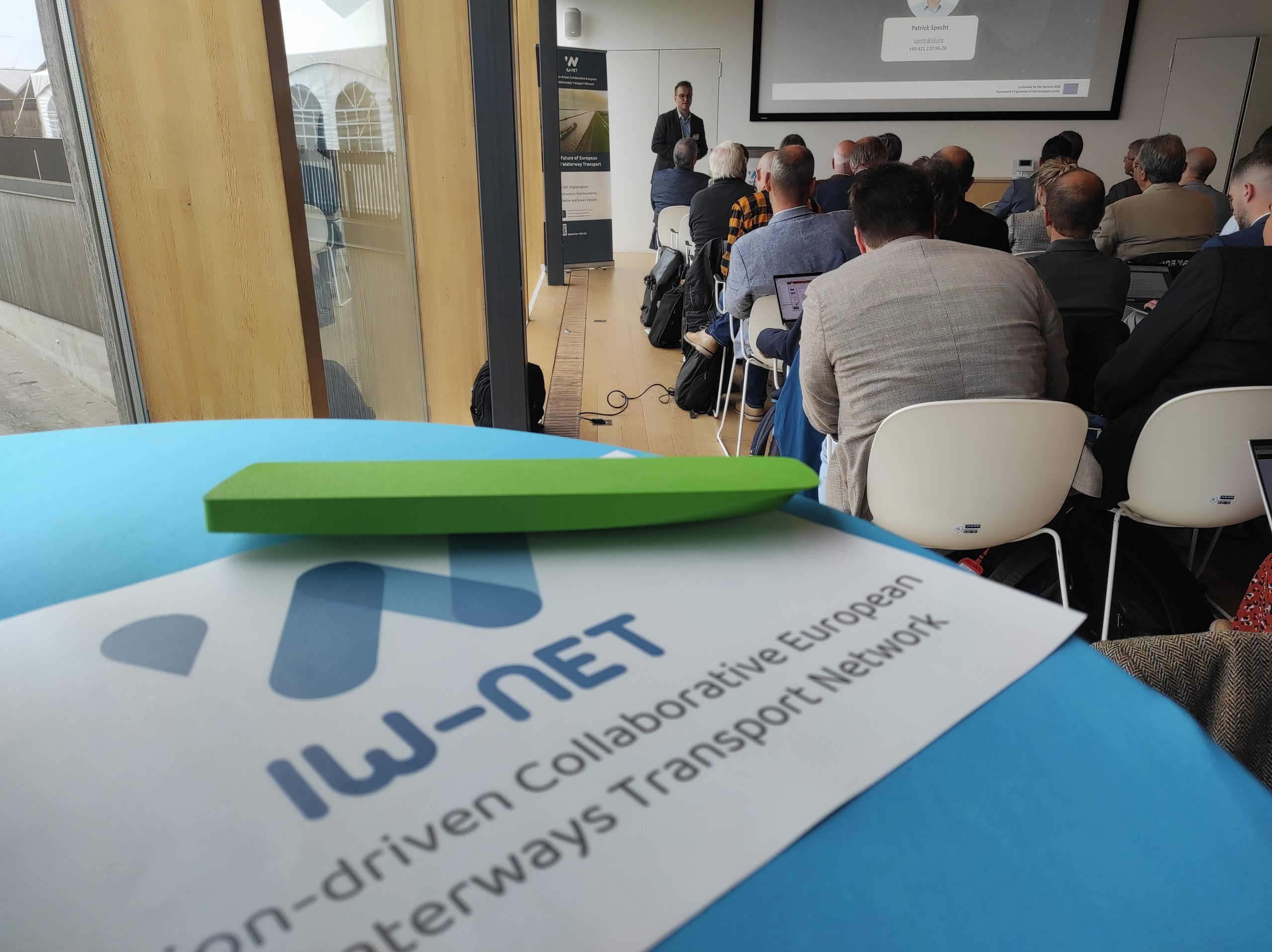
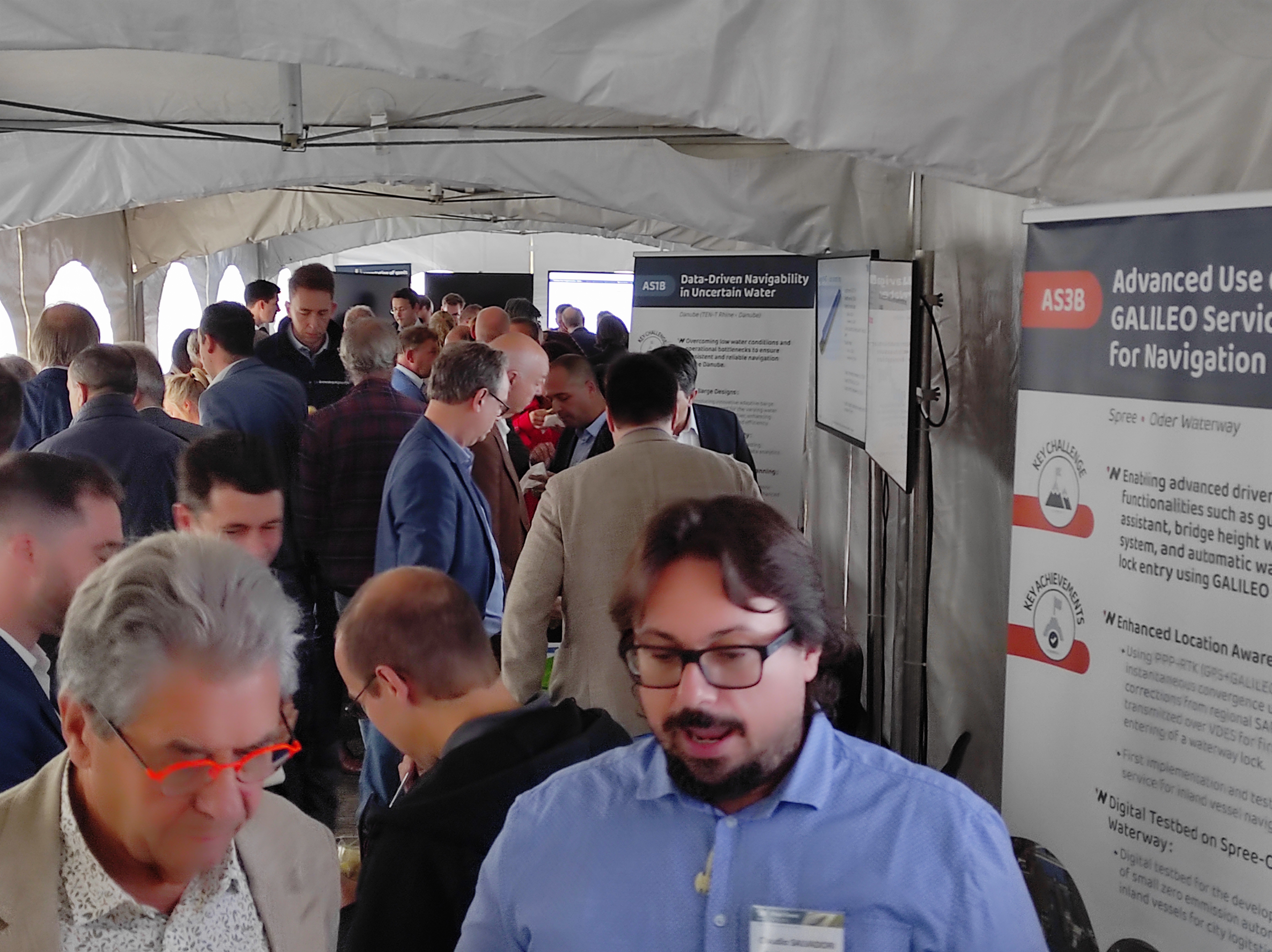
During the coffee break participants were invited to the IW-NET exposition area, an epicenter of knowledge exchange. Each user case of all application scenarios developed within the IW-NET project had its stand. The project partners had an occasion to interact with the audience, present their user cases, and showcase results.
Further enriching the morning session, Matthias Prandtstetter, Bianca Duldner-Borca, and Bernhard Bieringer provided a comprehensive analysis of the innovative vessel design strategies employed on the River Danube. Concurrently, Arne Gehlhaar enlightened attendees on the advancements in port call digitalization.
The afternoon sessions pivoted towards the realm of automation in shipping. The presentations by Peter Slaets and Ralf Ziebold on GALILEO positioning was particularly noteworthy, providing insights into the evolution of waterborne autonomy.
One of the highlights of the IW-NET Final Event was undoubtedly the series of demonstrations on water, meticulously orchestrated to provide a tangible experience of advances in waterborne transport. Against the panoramic windows of the North Sea port of Ghent, participants were invited to a live showcase of technological innovations:
Maverick KUL Vessel: Sensor-Driven Autonomous Sailing
Participants witnessed the Maverick KUL vessel’s prowess in autonomous sailing. Employing a multimodal sensor box, the vessel manoeuvred safely, maintaining optimal distance from the quay. Beyond the physical capabilities, the technological marvel lay in its ability to transmit live perception data via 4G/5G networks. Not just data transmission, this vessel transformed local perceptions into a global Inland Navigational Chart frame, underscoring the elevated level of automation and situational awareness in modern inland navigation.
Platooning with IW-NET Urban Vessel I
The next spectacle was a harmonious dance between vessels, demonstrating the concept of autonomous vessel platooning. The Maverick KUL vessel, operating without a skipper, seamlessly tailed the IW-NET urban vessel I in a train-like simulation. The Maverick’s role as the daughter vessel was executed flawlessly, using its perception sensor box to not only visualise but also to relay control and tracking data in real-time to shoreside monitors. This live demonstration provided a compelling case for the precision and feasibility of autonomous vessel trains in inland transport.
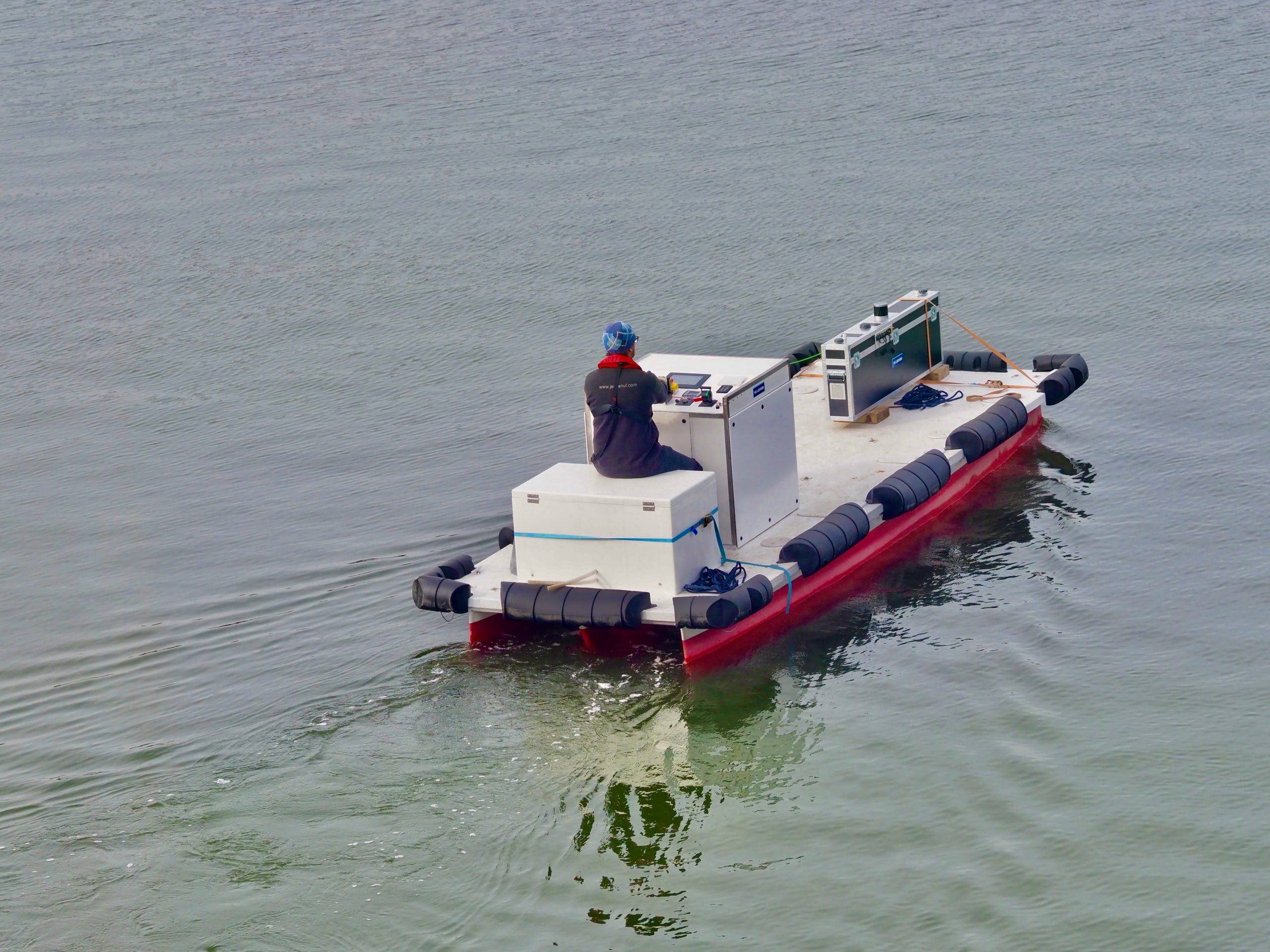
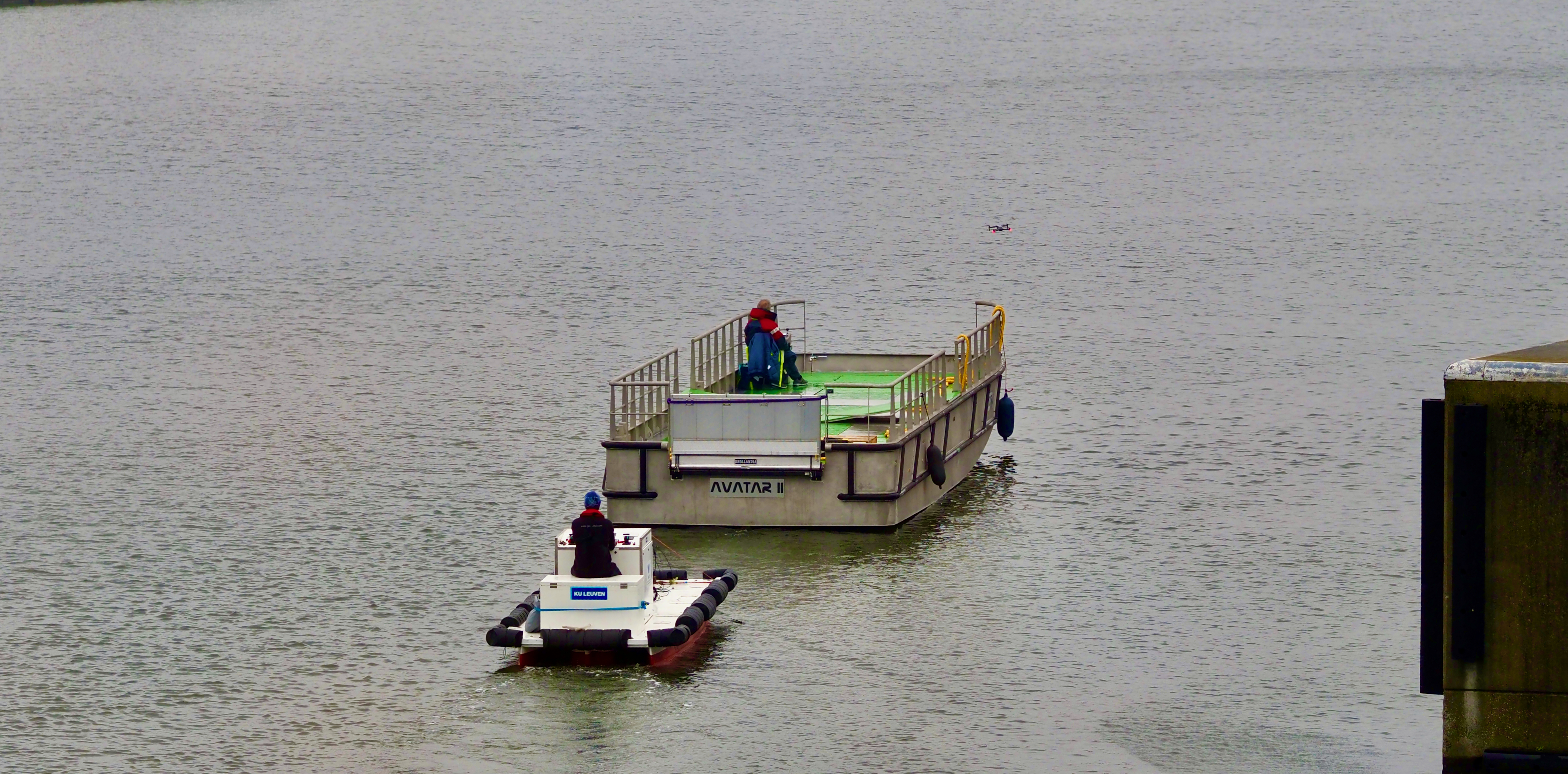
Aboard the IW-NET Urban Vessel II
For those with an appetite for a closer look, the quay also hosted the IW-NET urban vessel II. This static demonstration allowed attendees to board and explore firsthand the vessel’s advanced features. Integral components developed within the IW-NET framework were on display – from its zero-emission propulsion system to a formidable battery pack, all aligned with ES-TRIN standards. Additionally, participants got an inside look at the vessel’s roll-on & roll-off ramp and engaged in enlightening discussions on propulsion and hull design, encapsulating the essence of sustainable and efficient waterway transportation’s future.
Concluding the symposium, Nils Meyer-Larsen encapsulated the day’s findings and shared a vision for the sector’s future, emphasizing collaboration and technological adoption. Though the curtains fell on the event, the insights shared promise to steer the direction of inland waterway transportation towards enhanced efficiency and sustainability.
